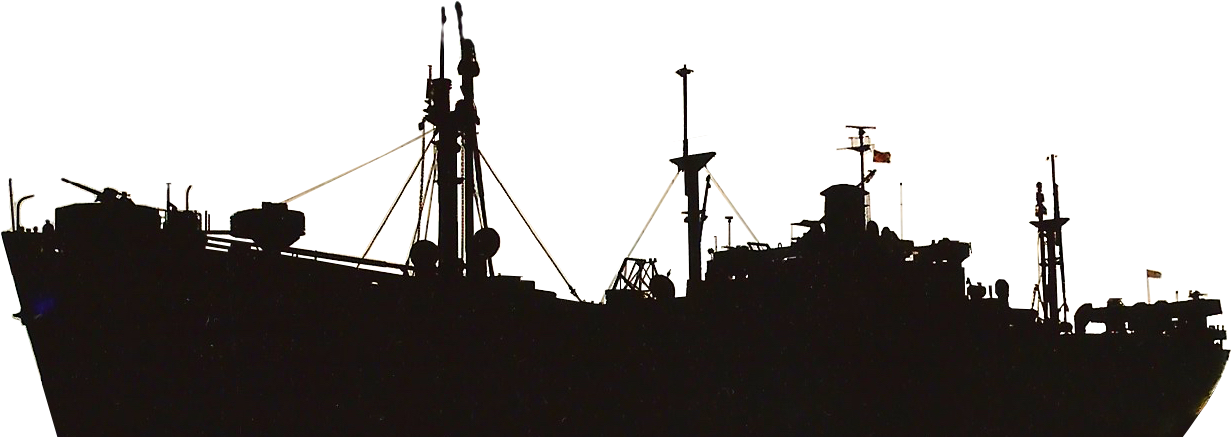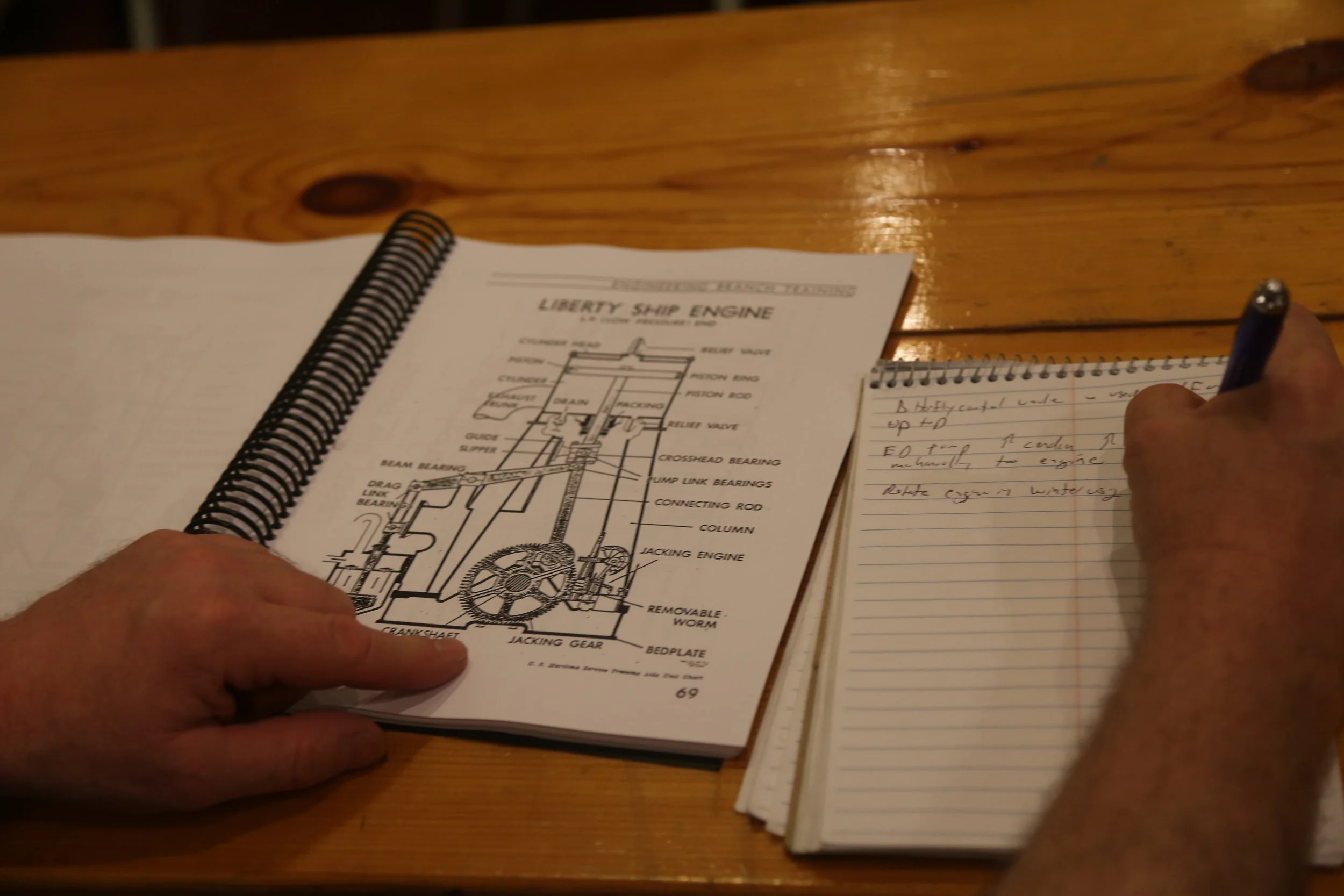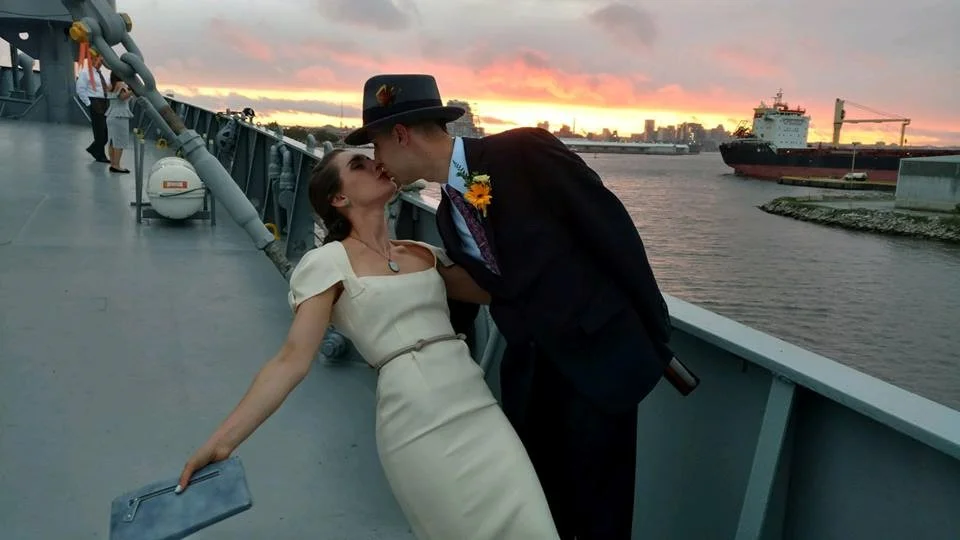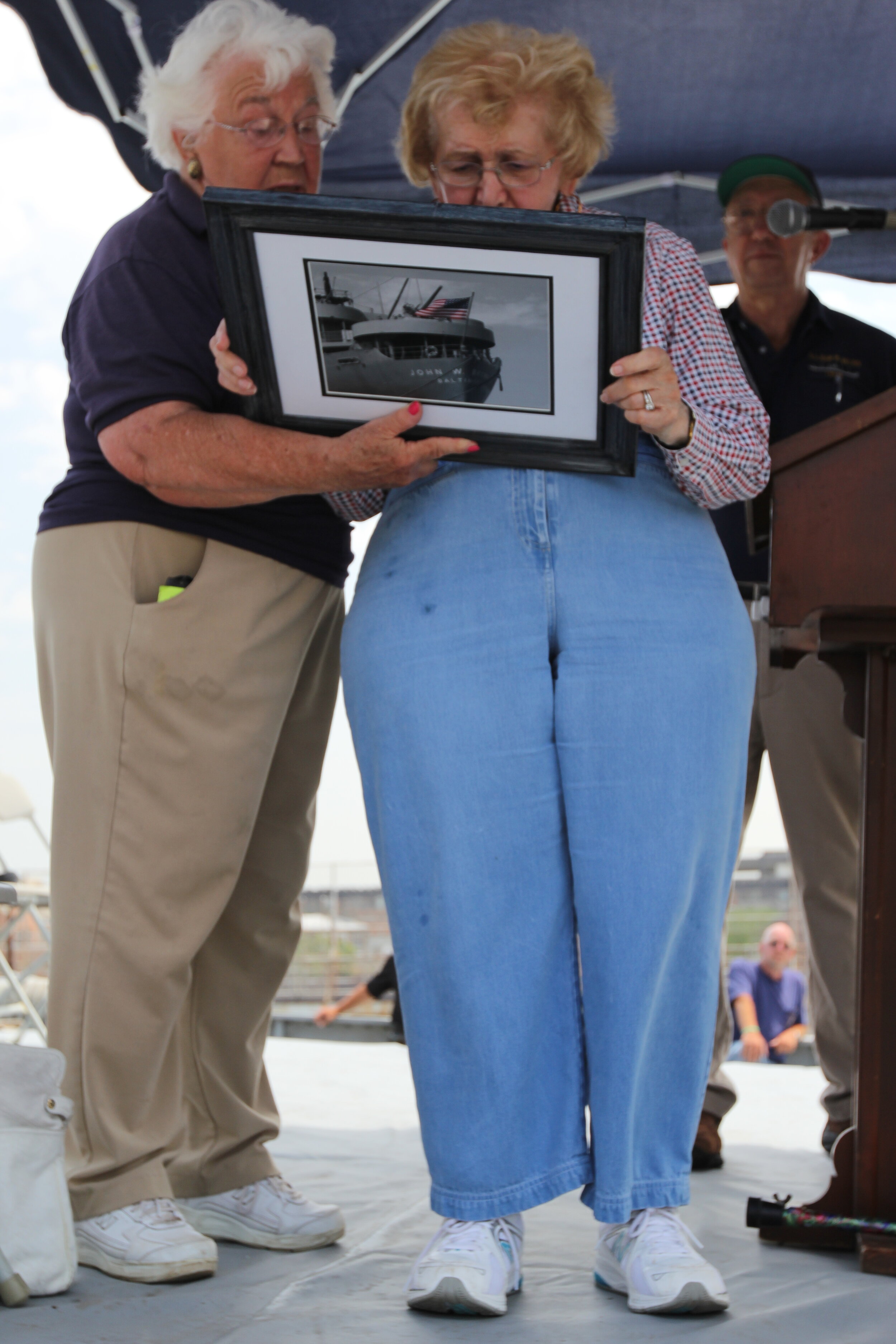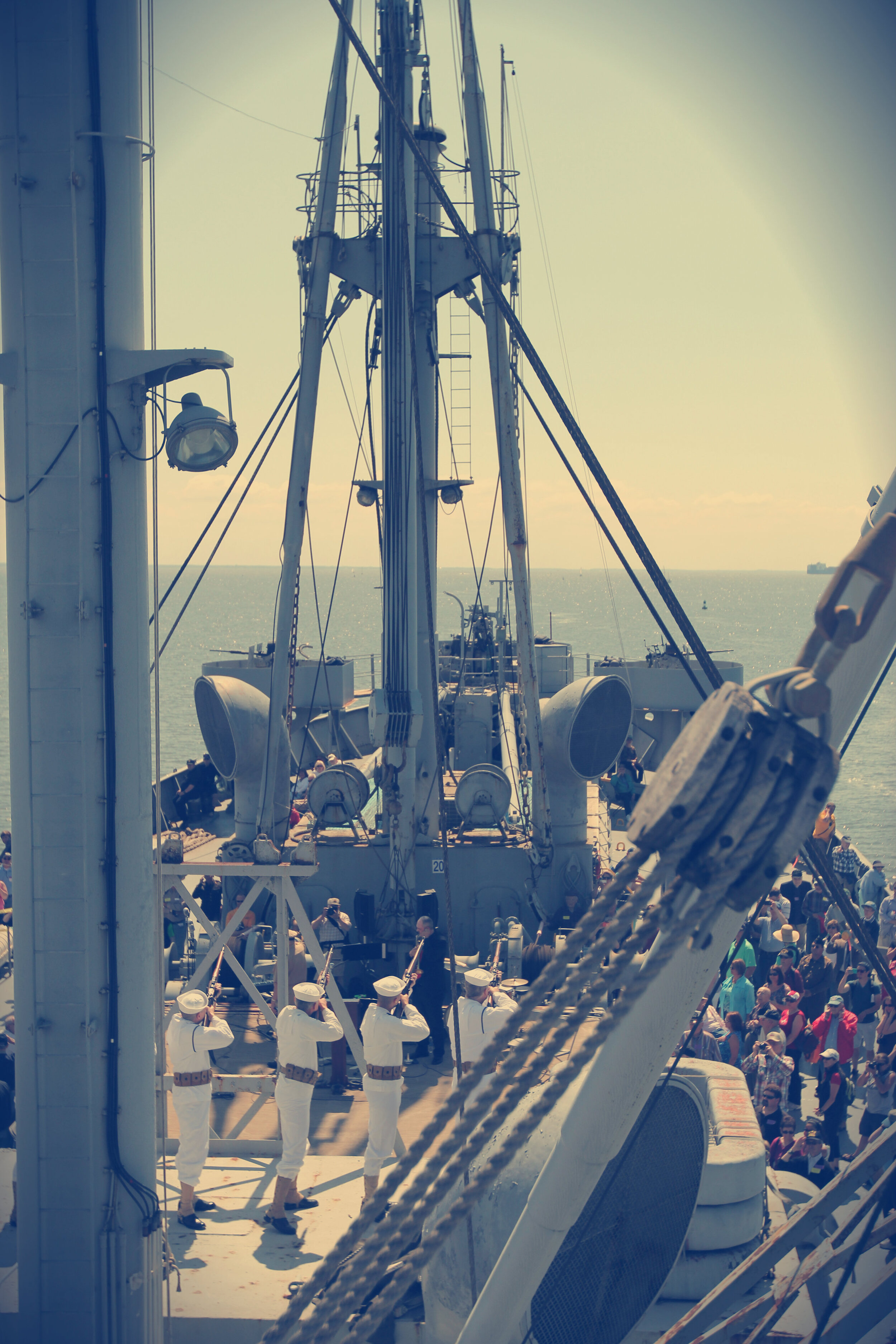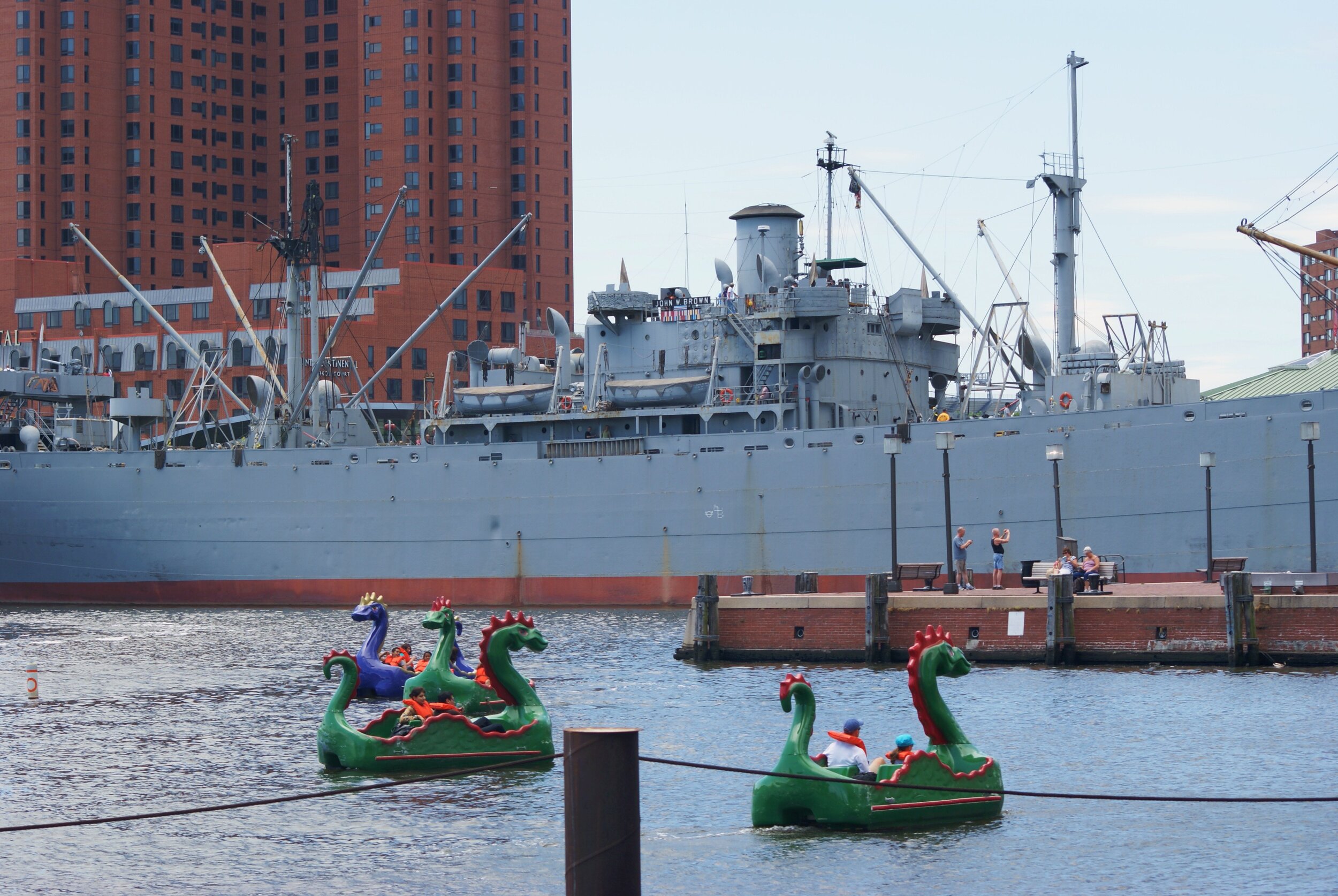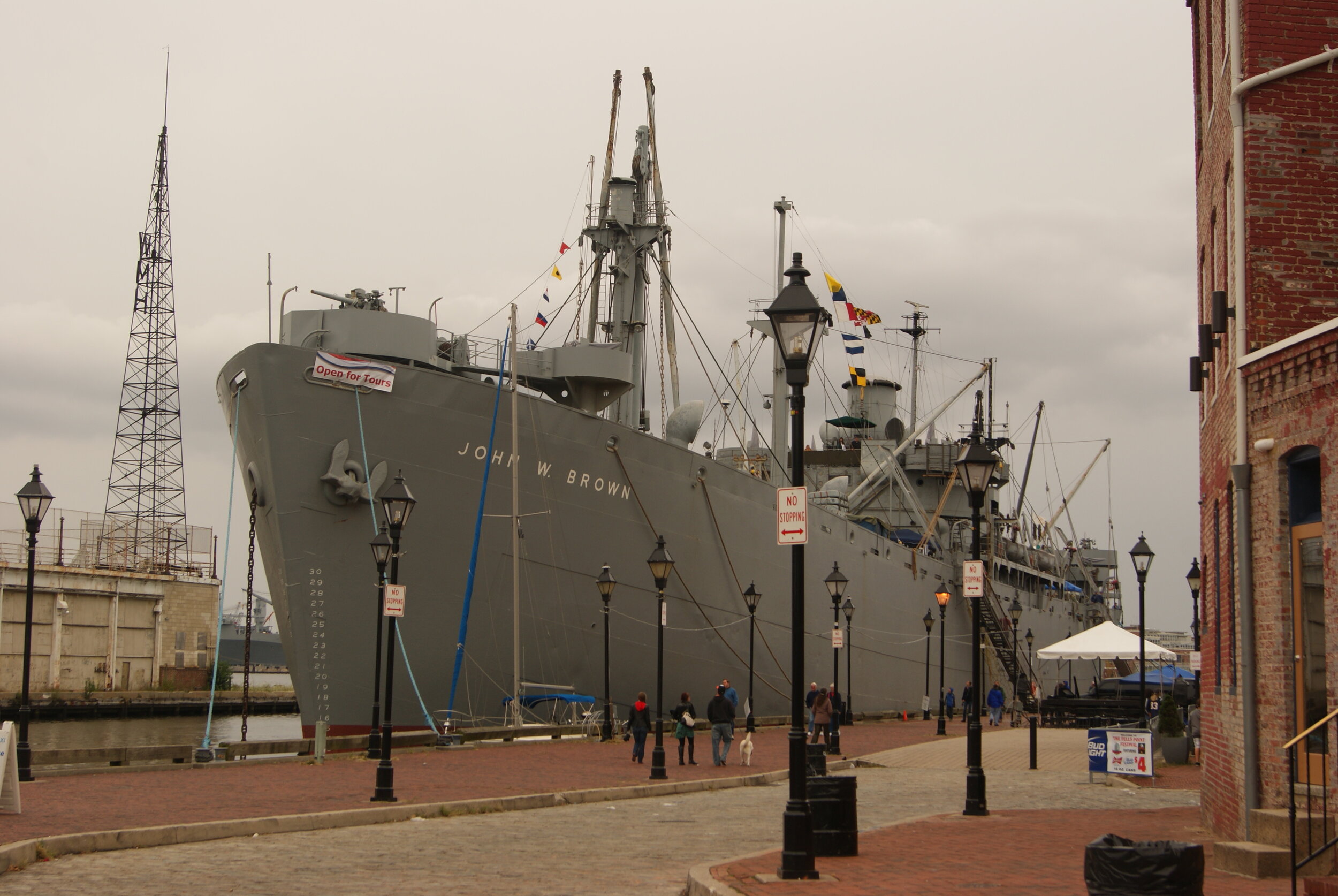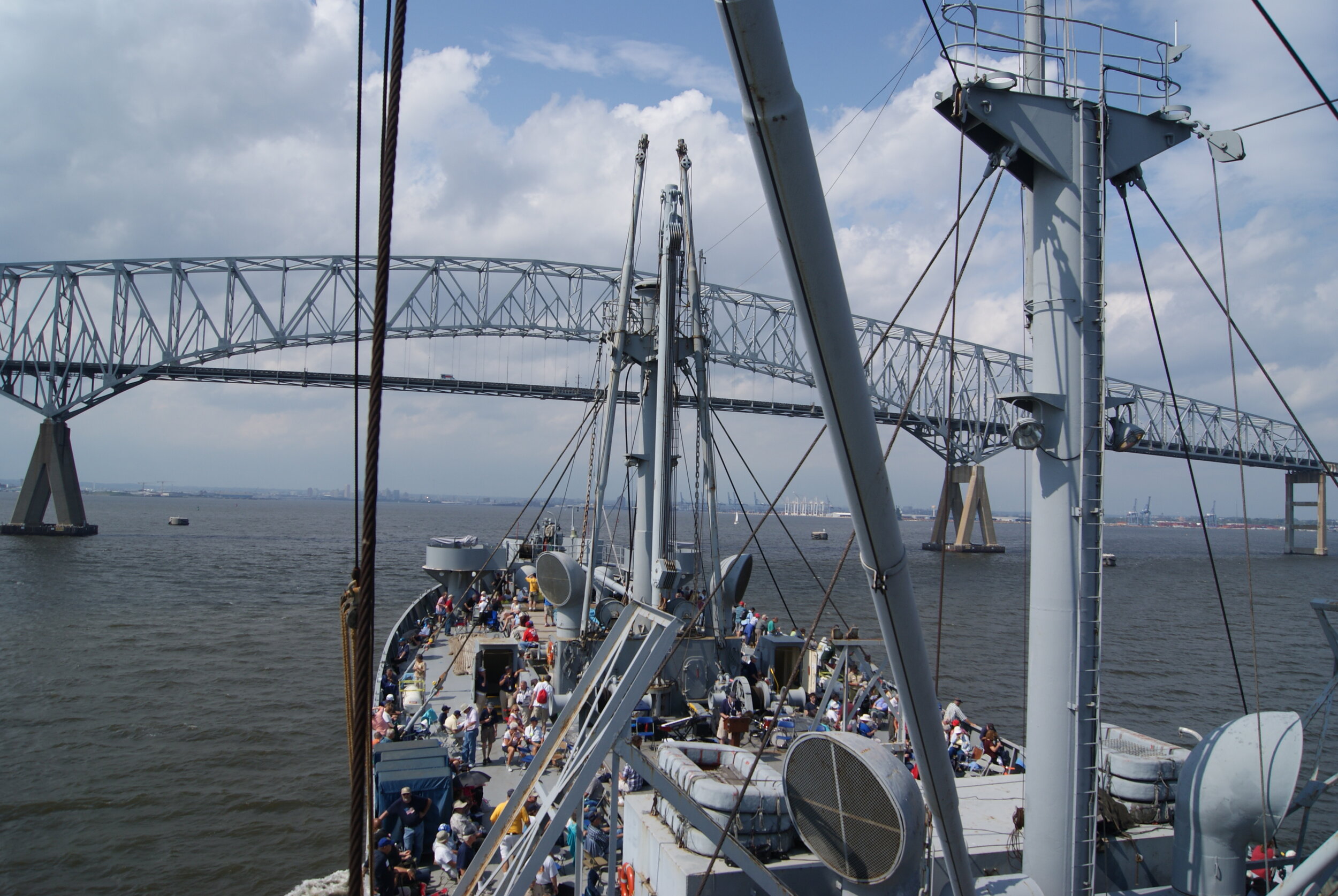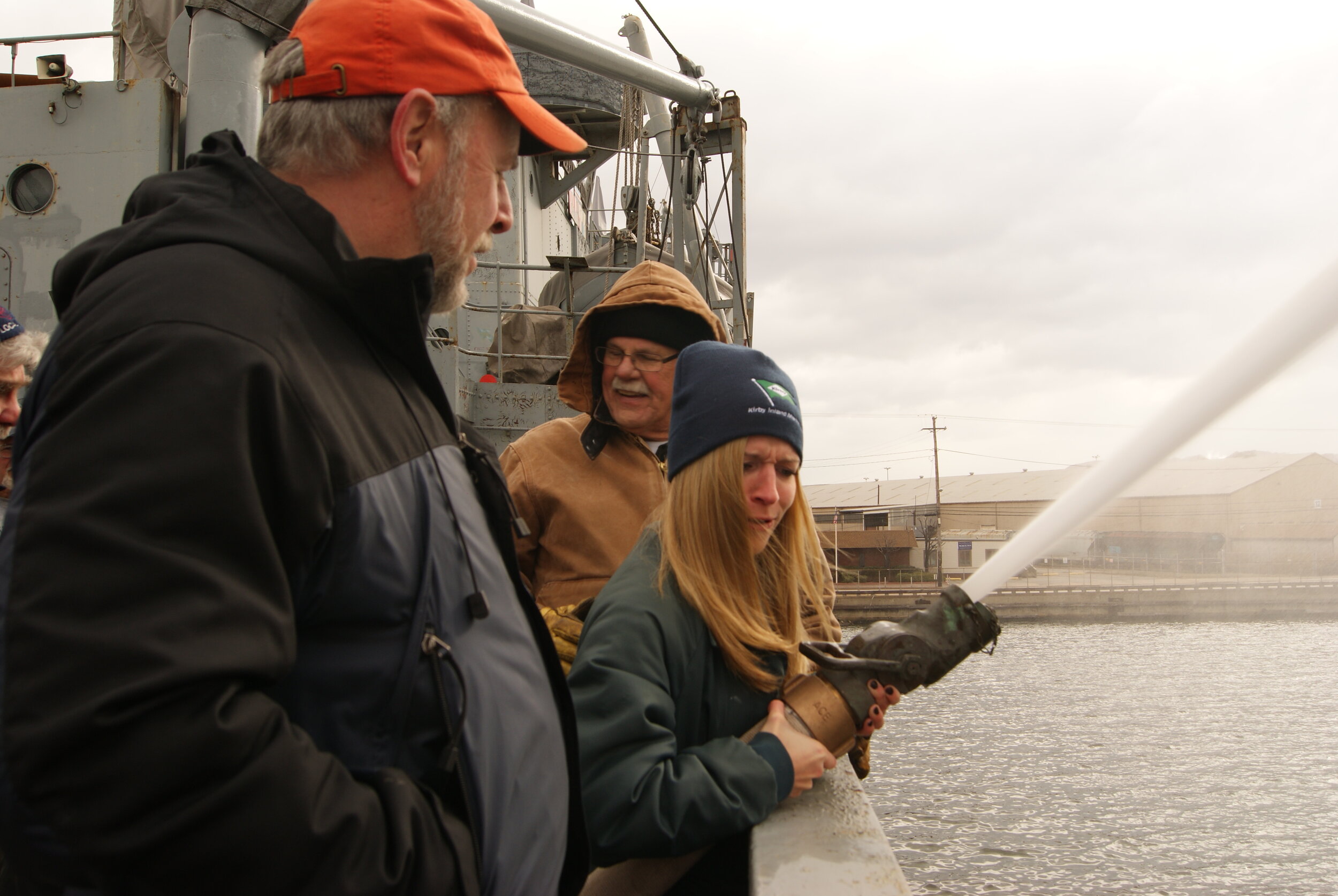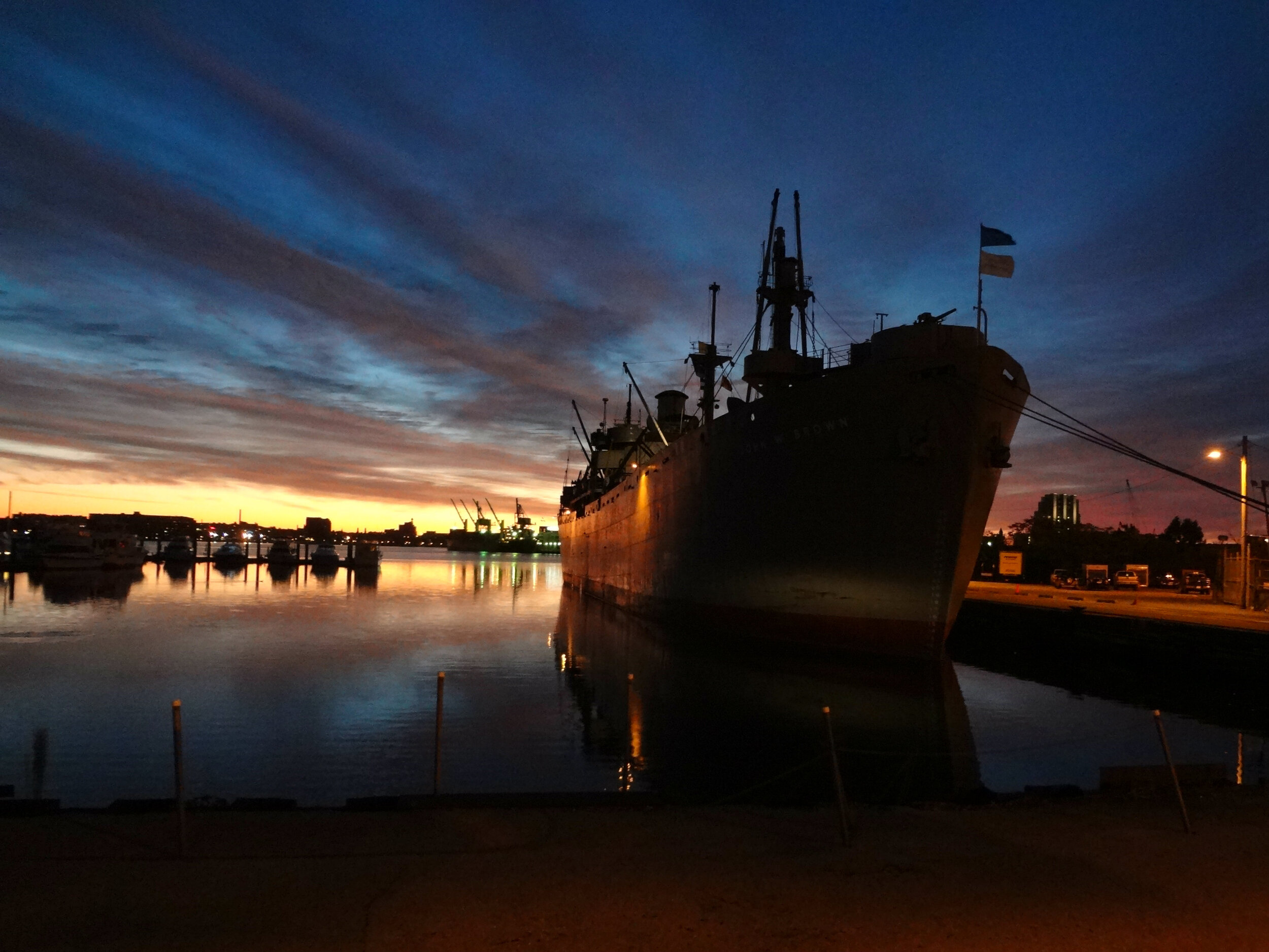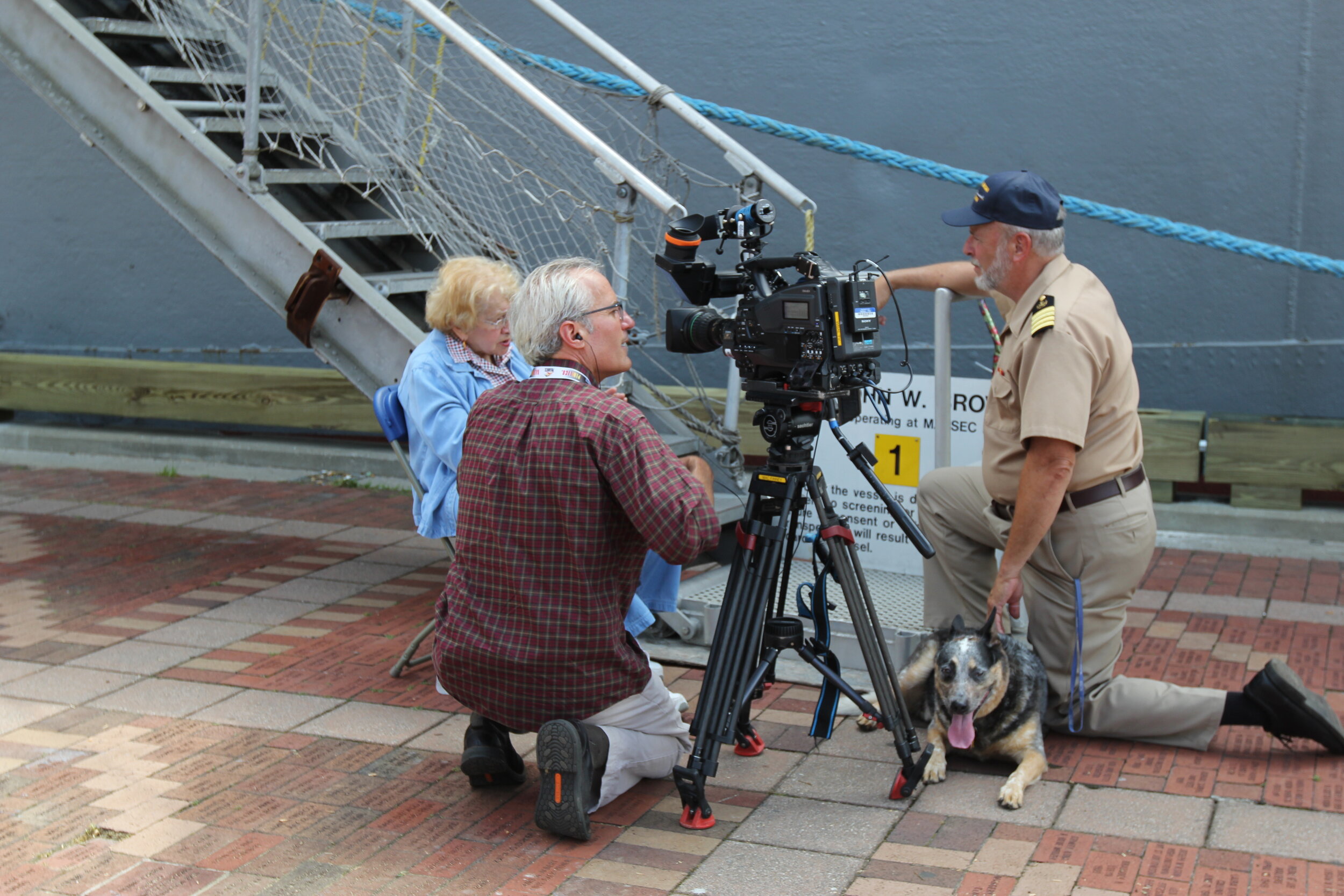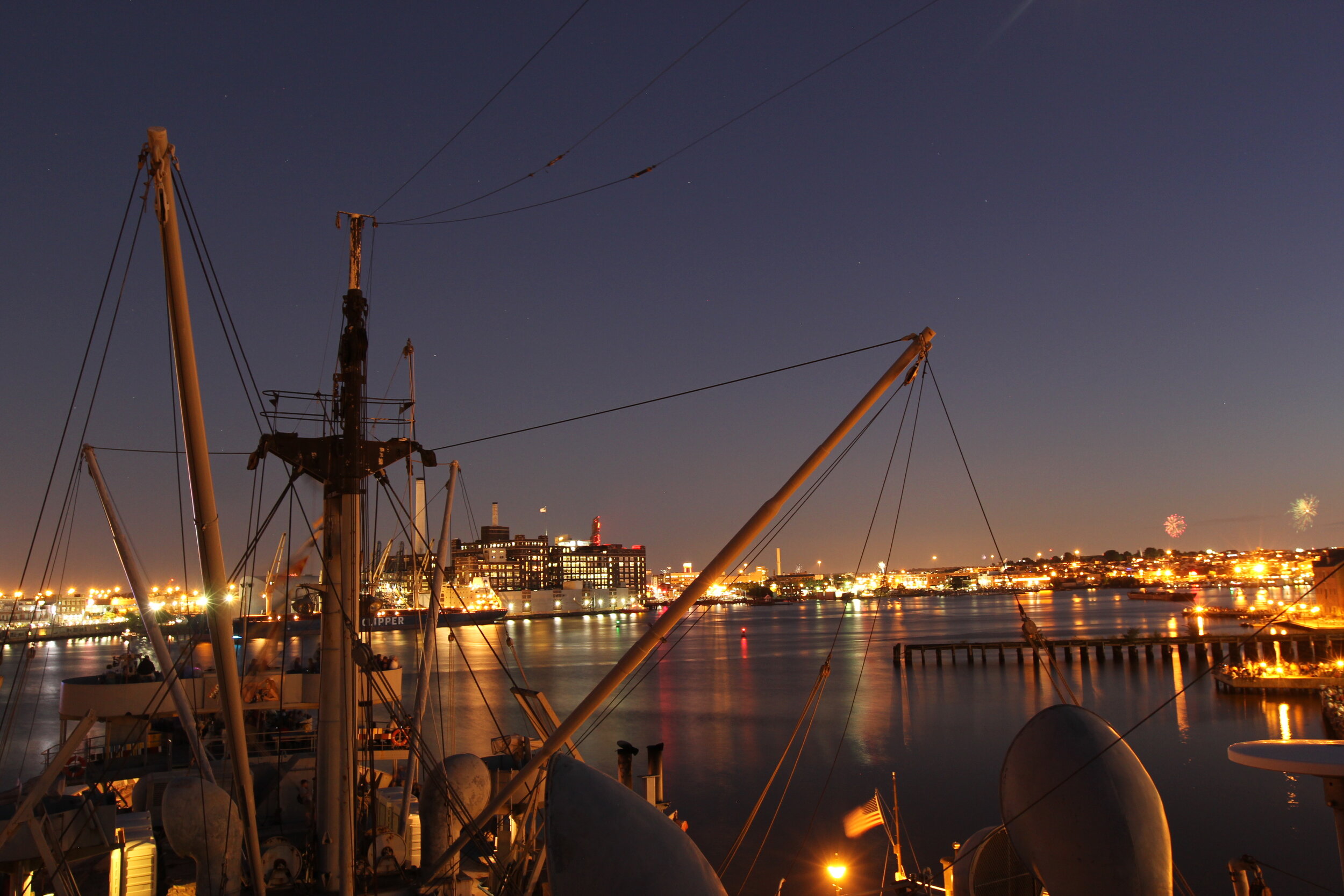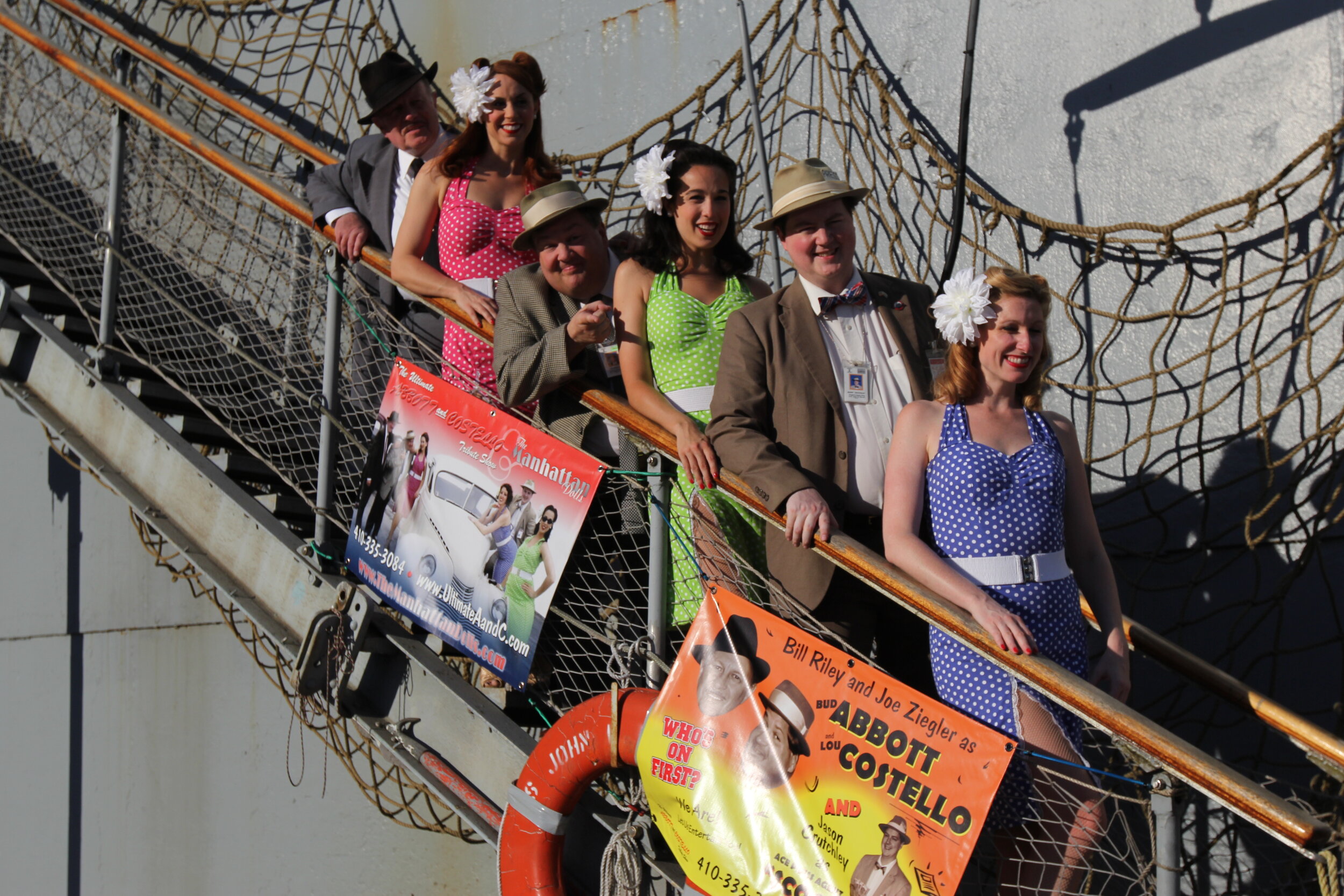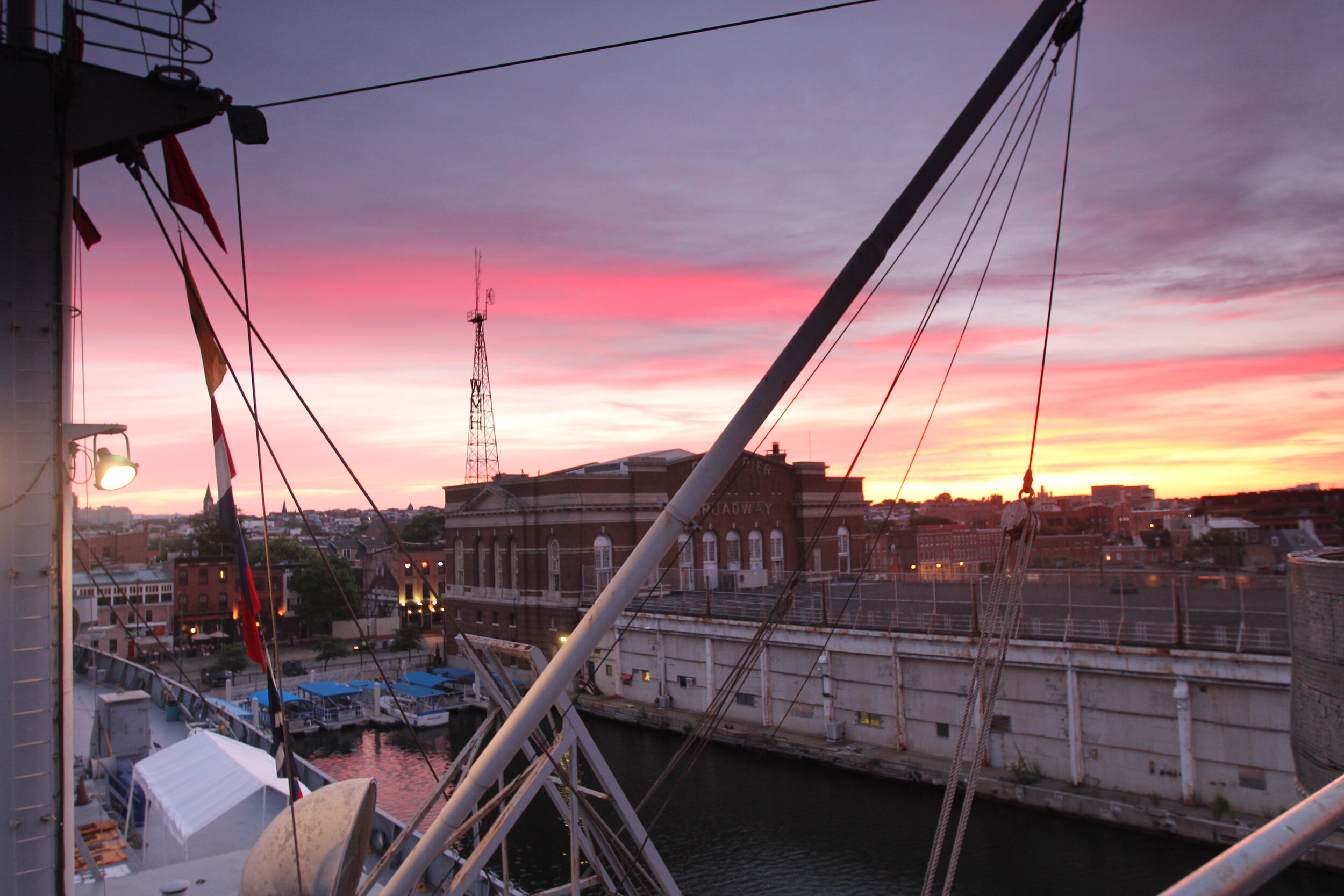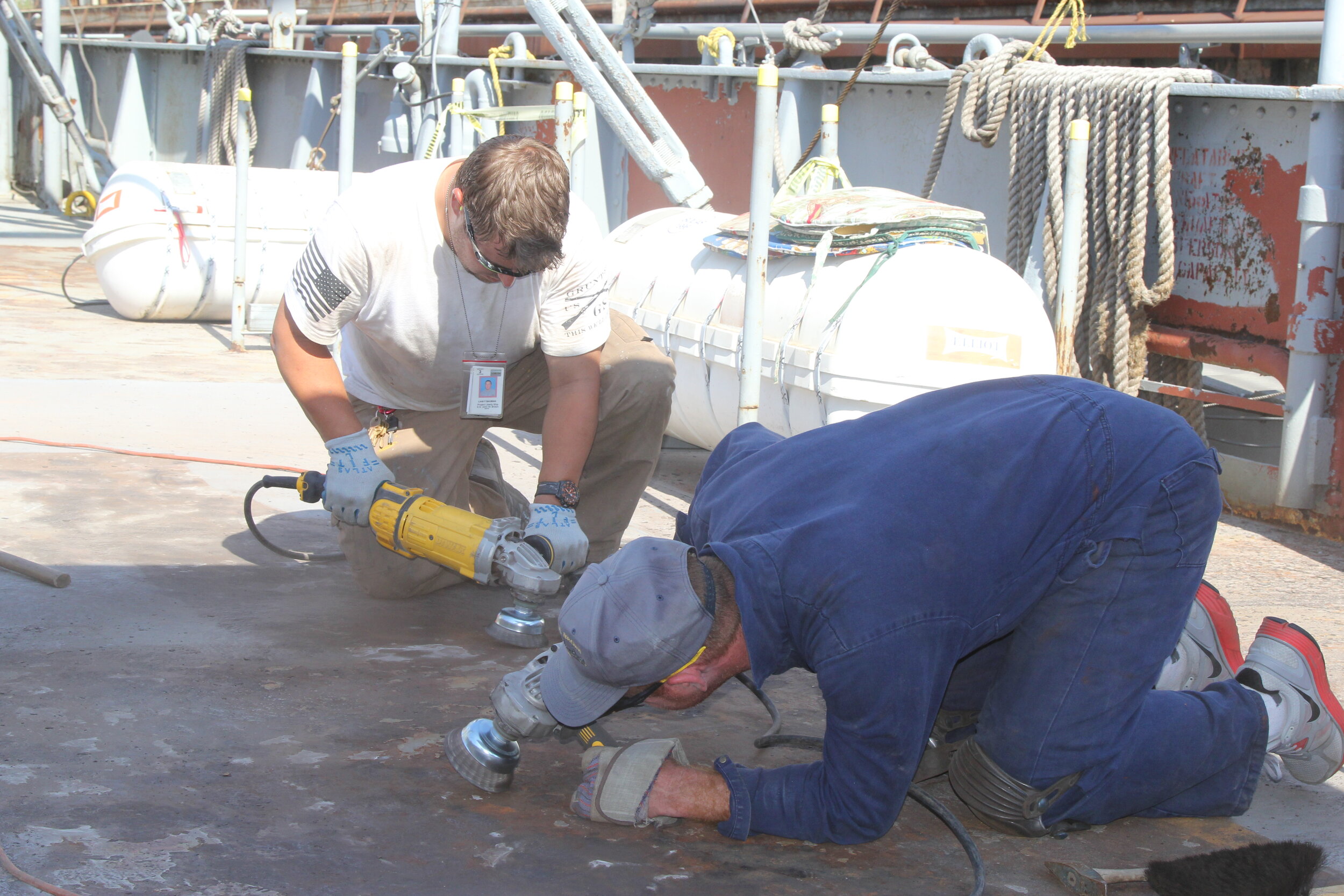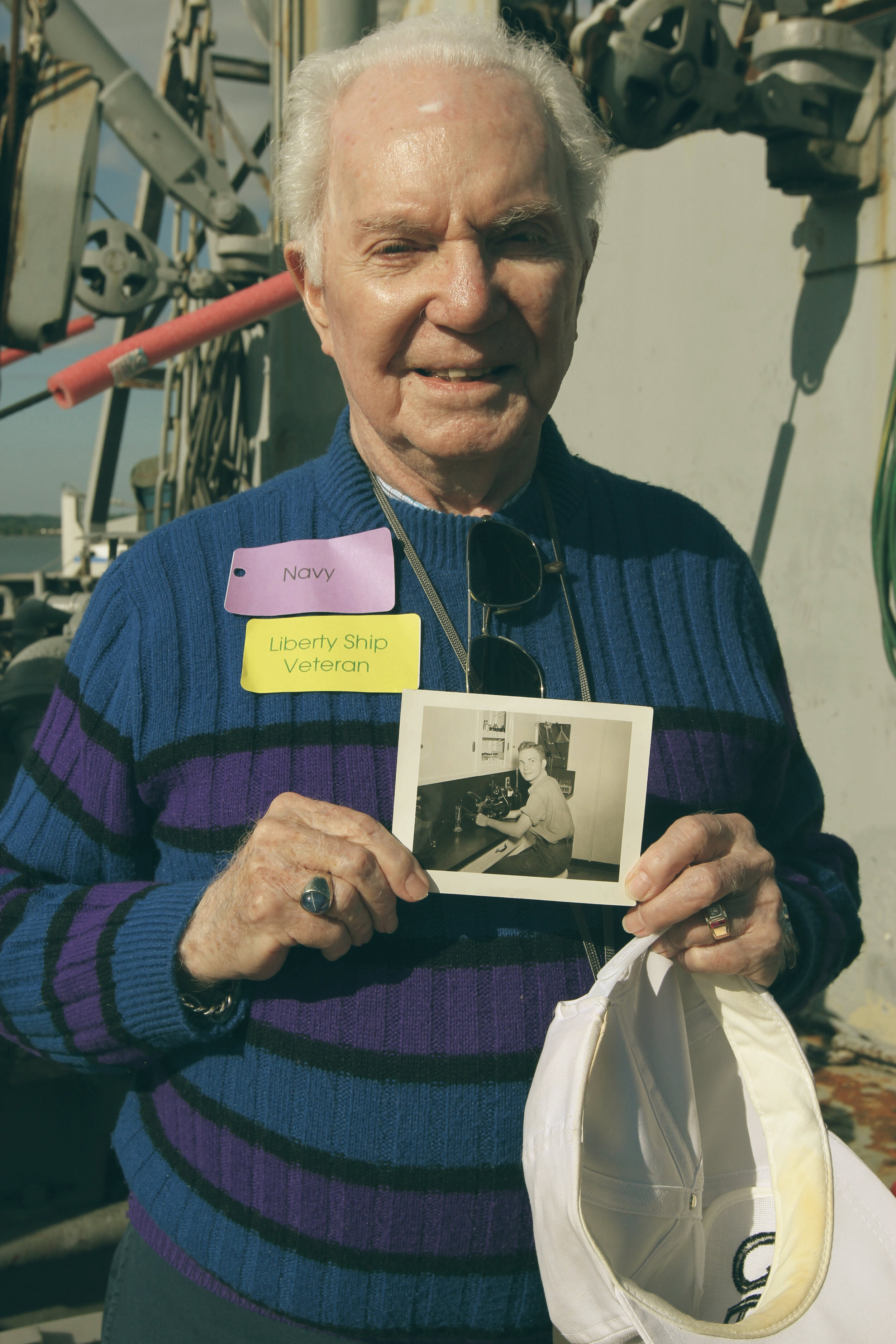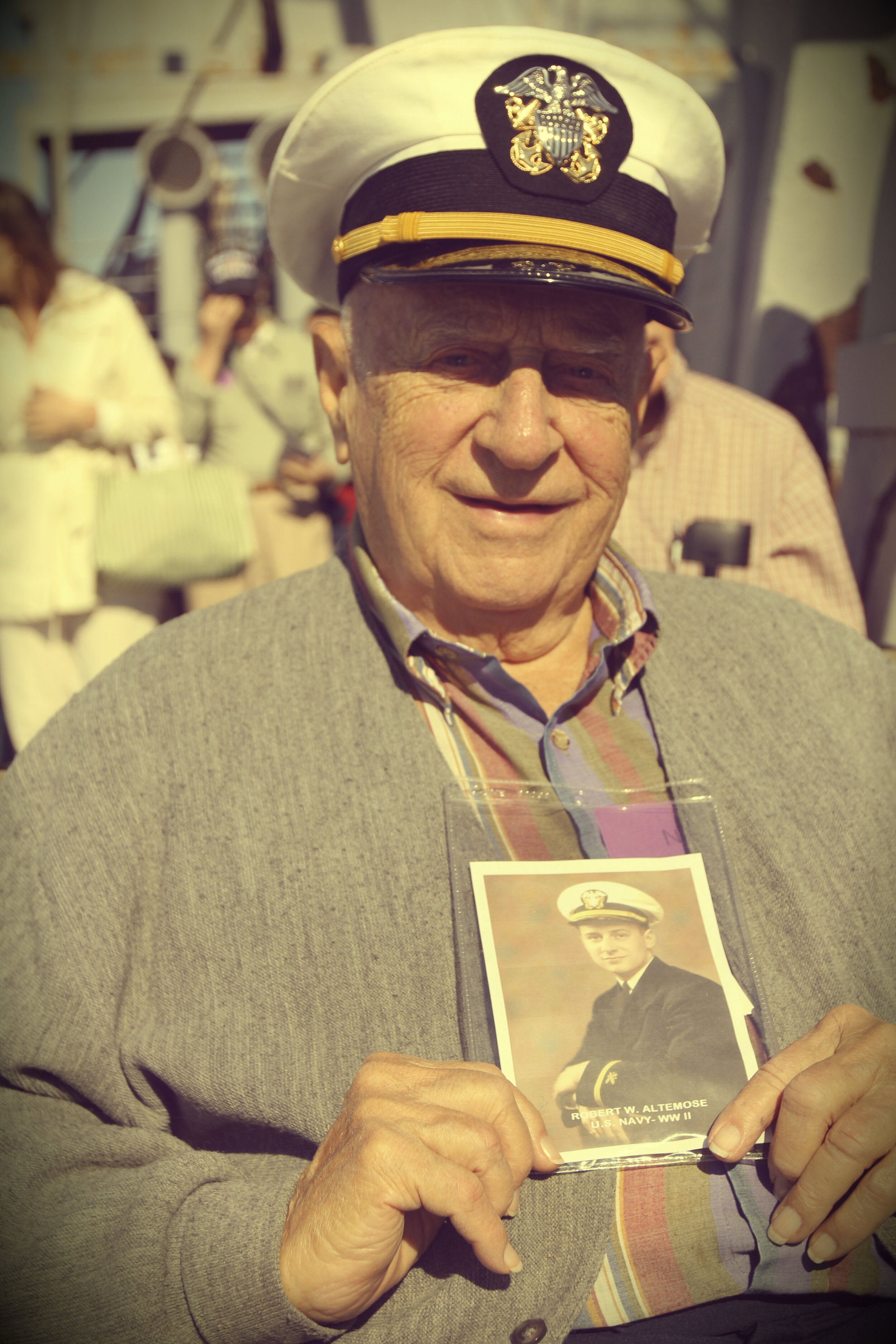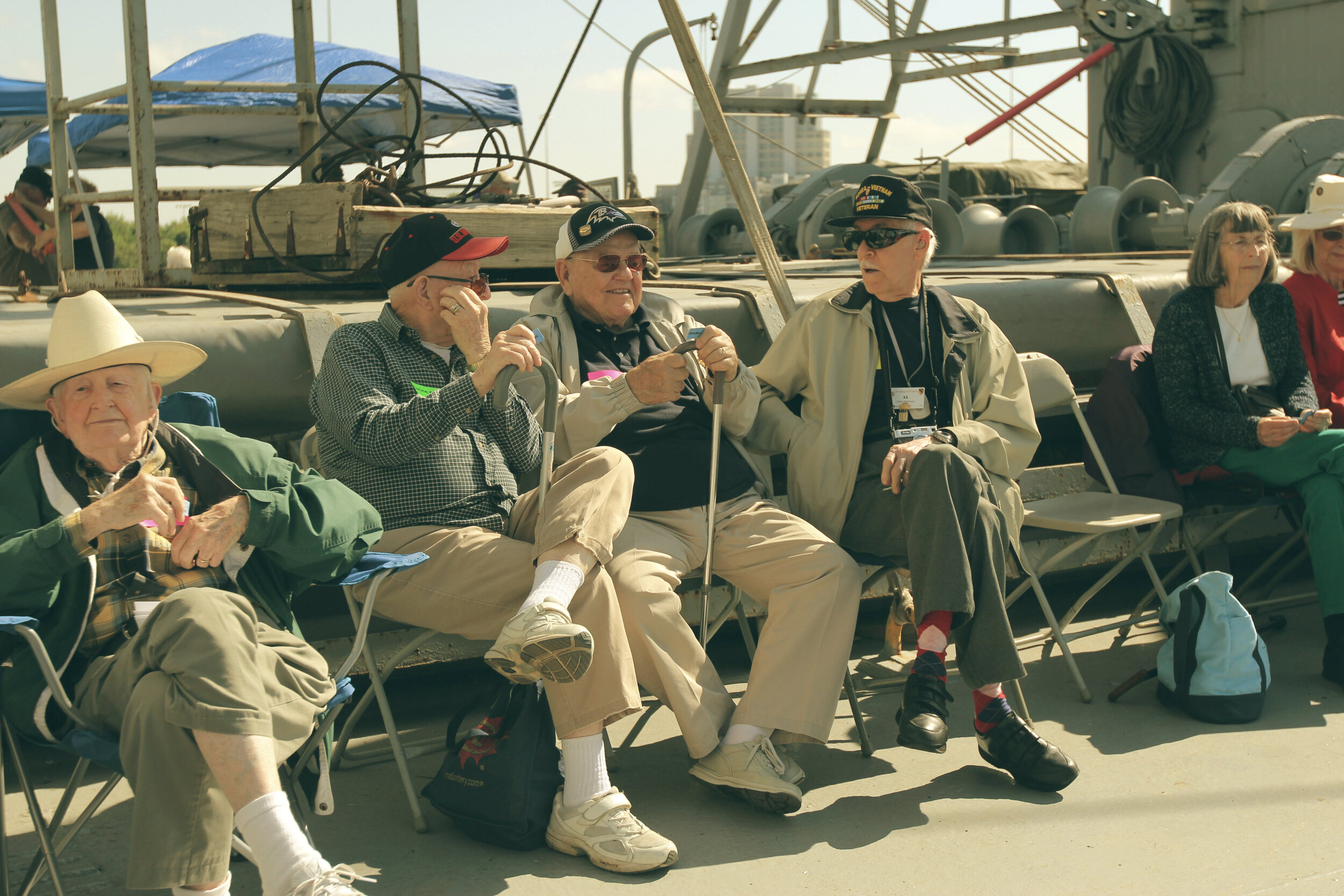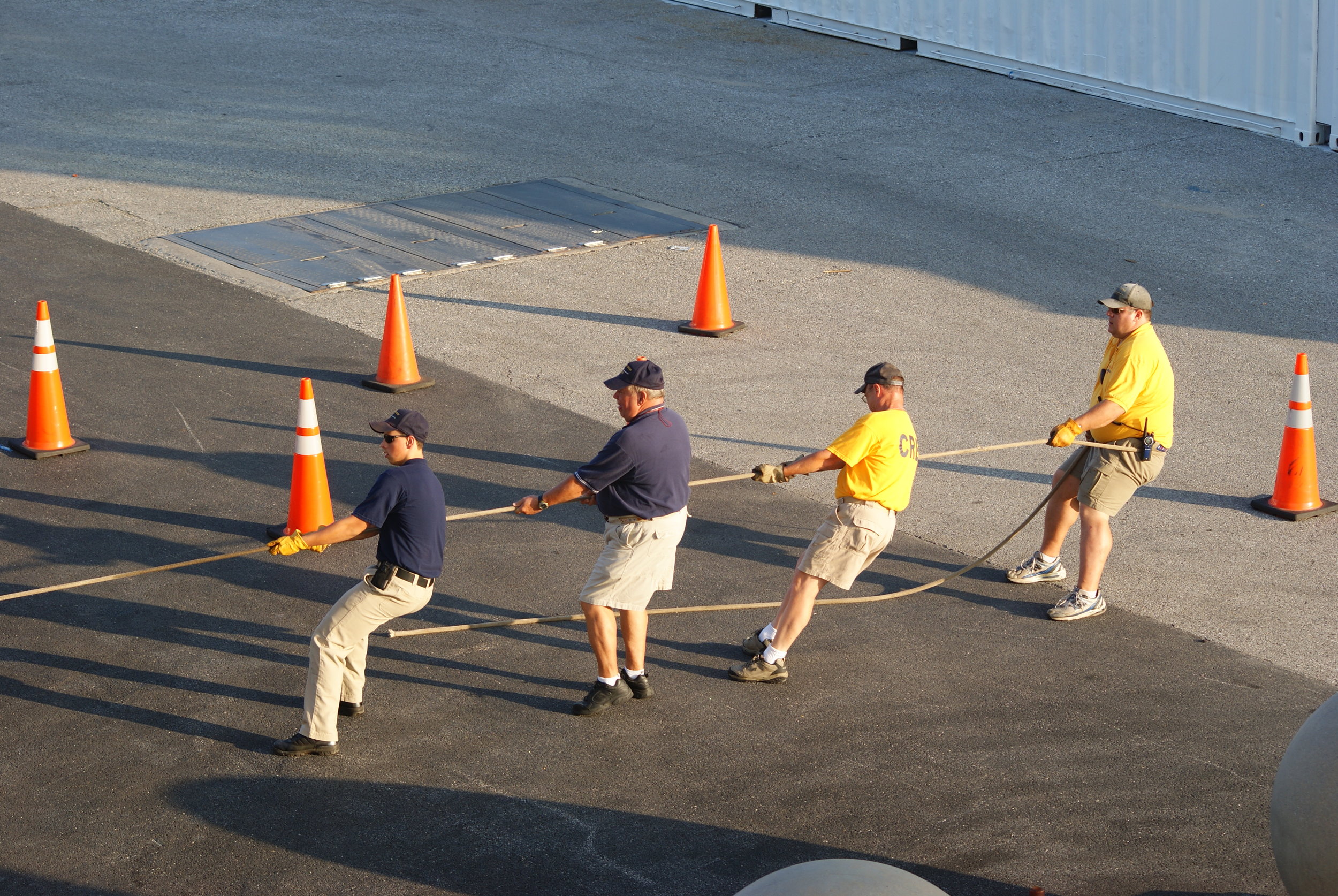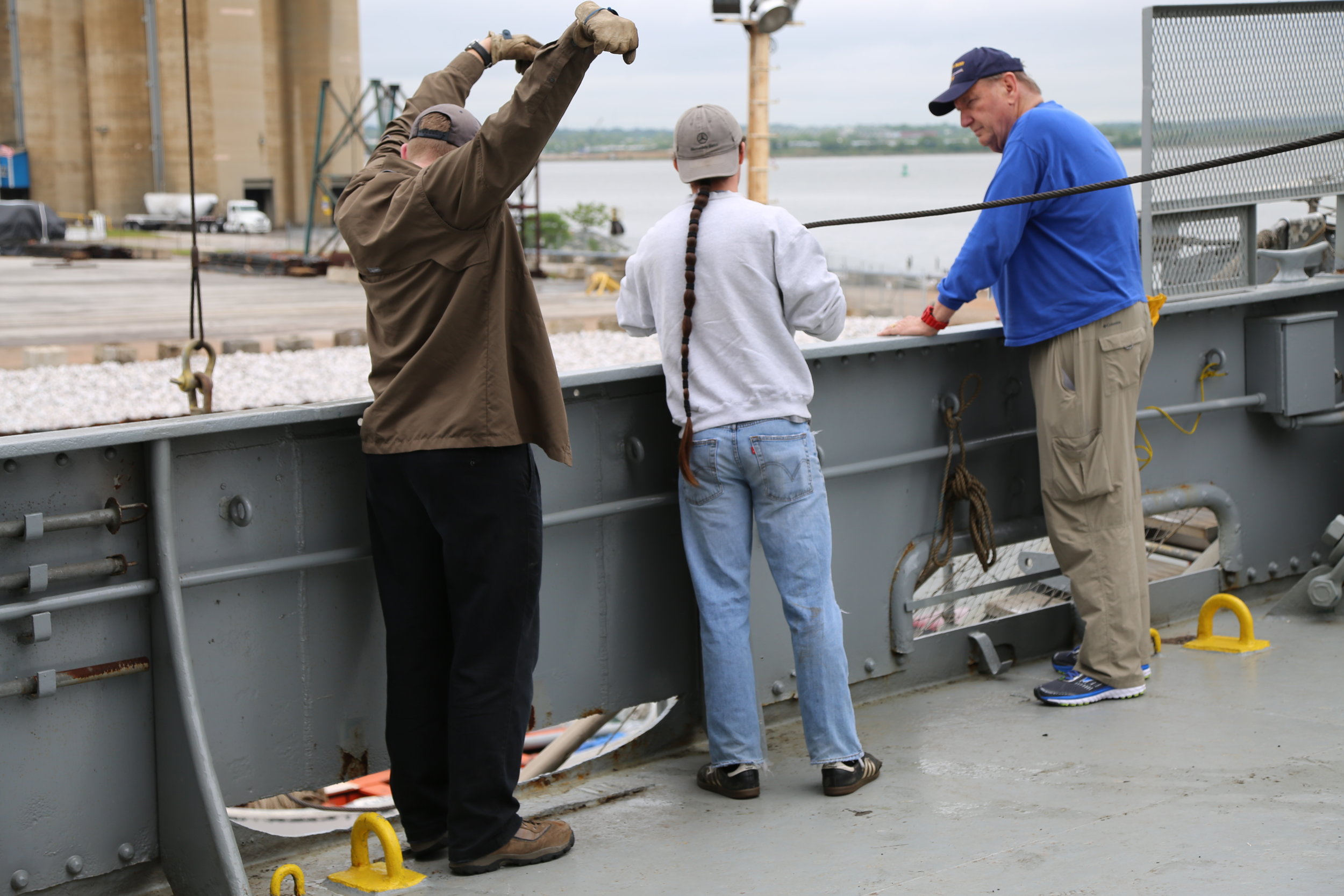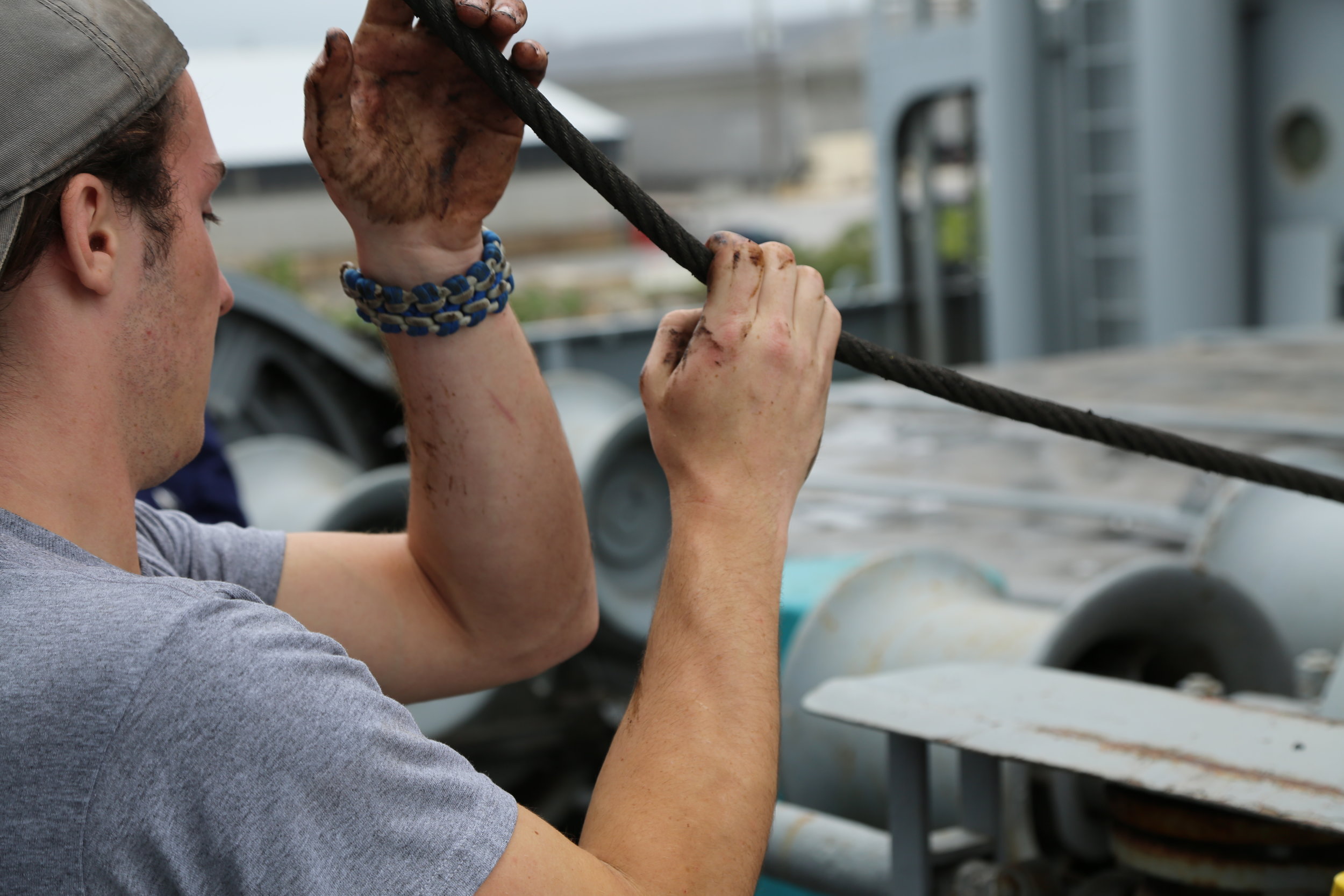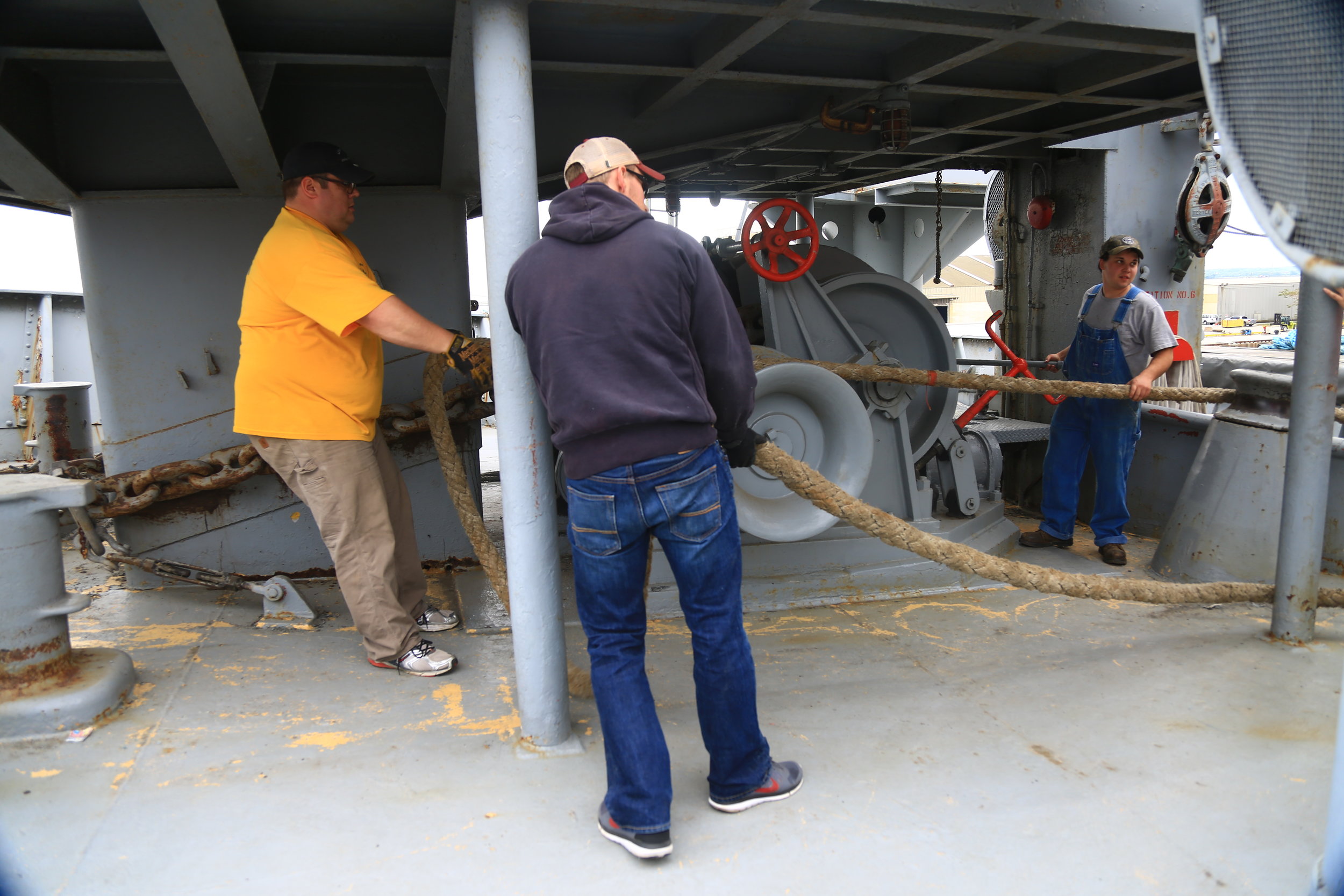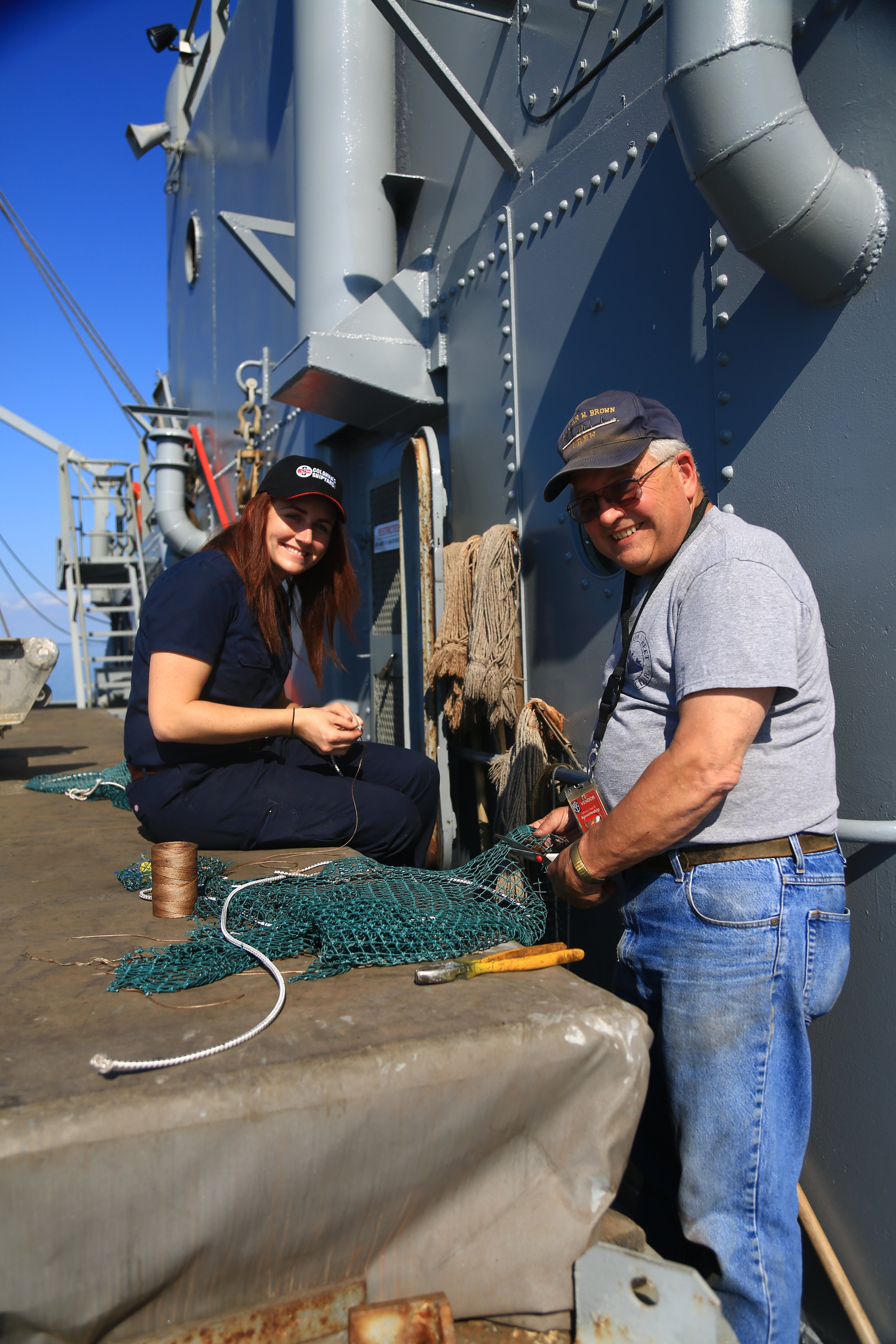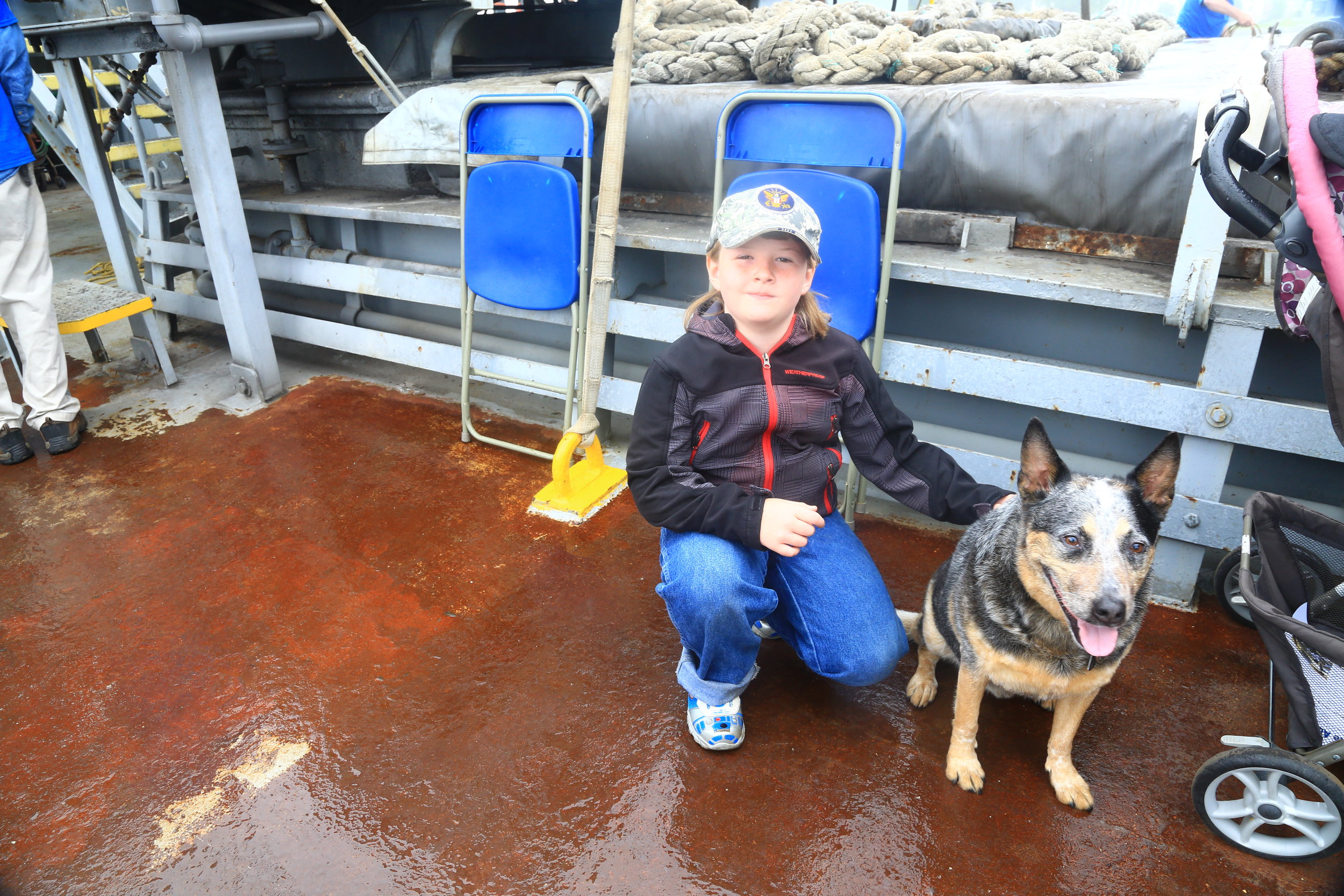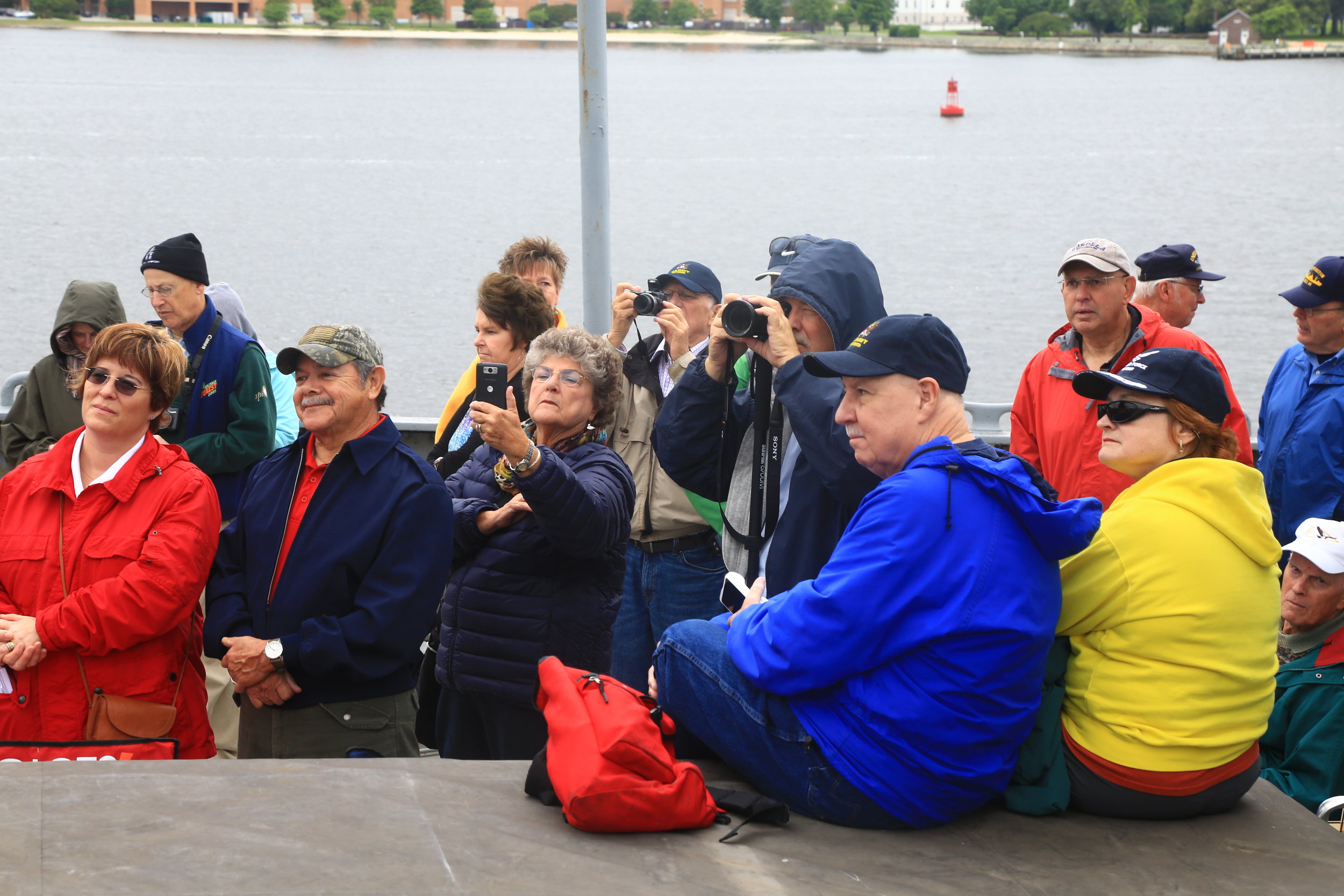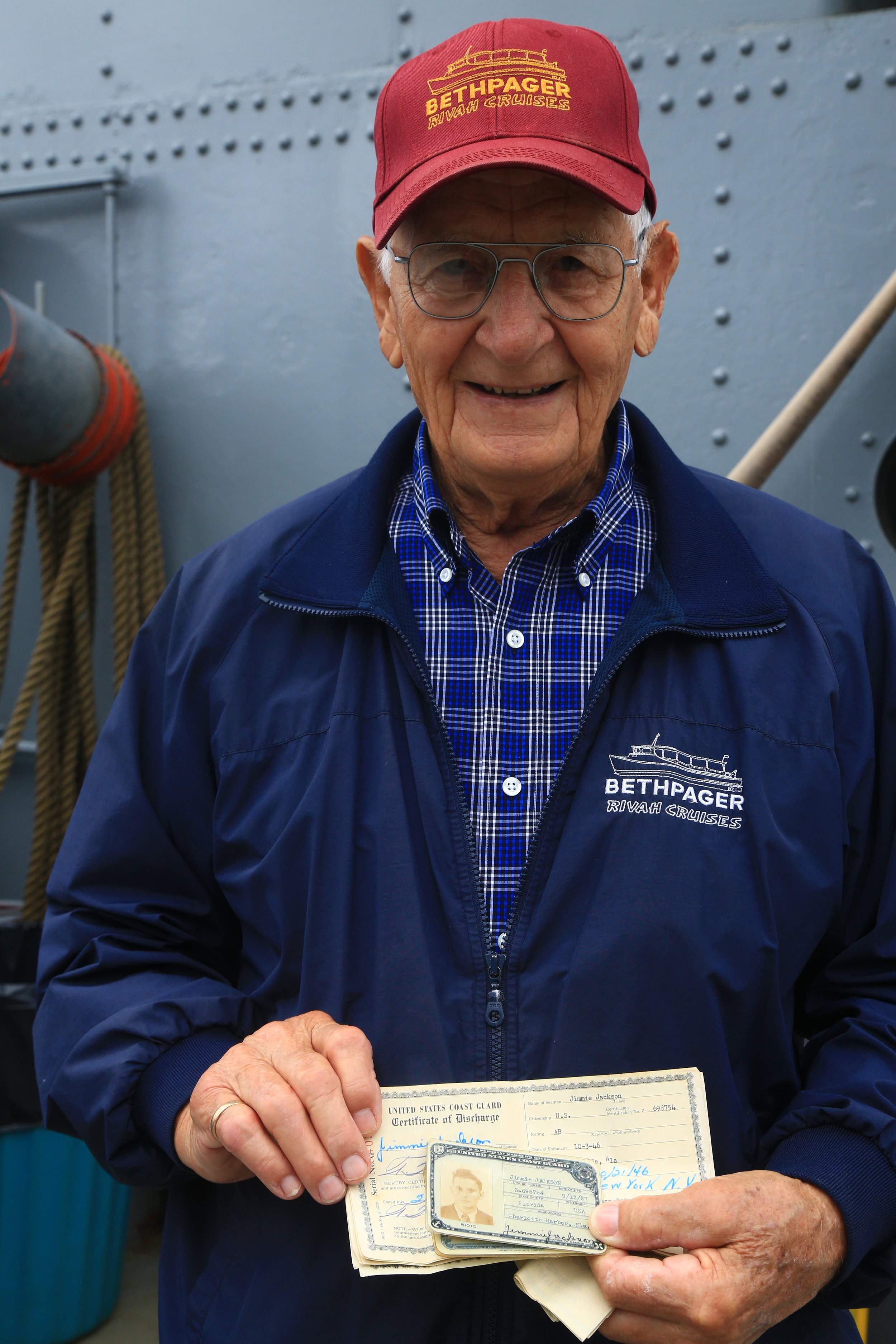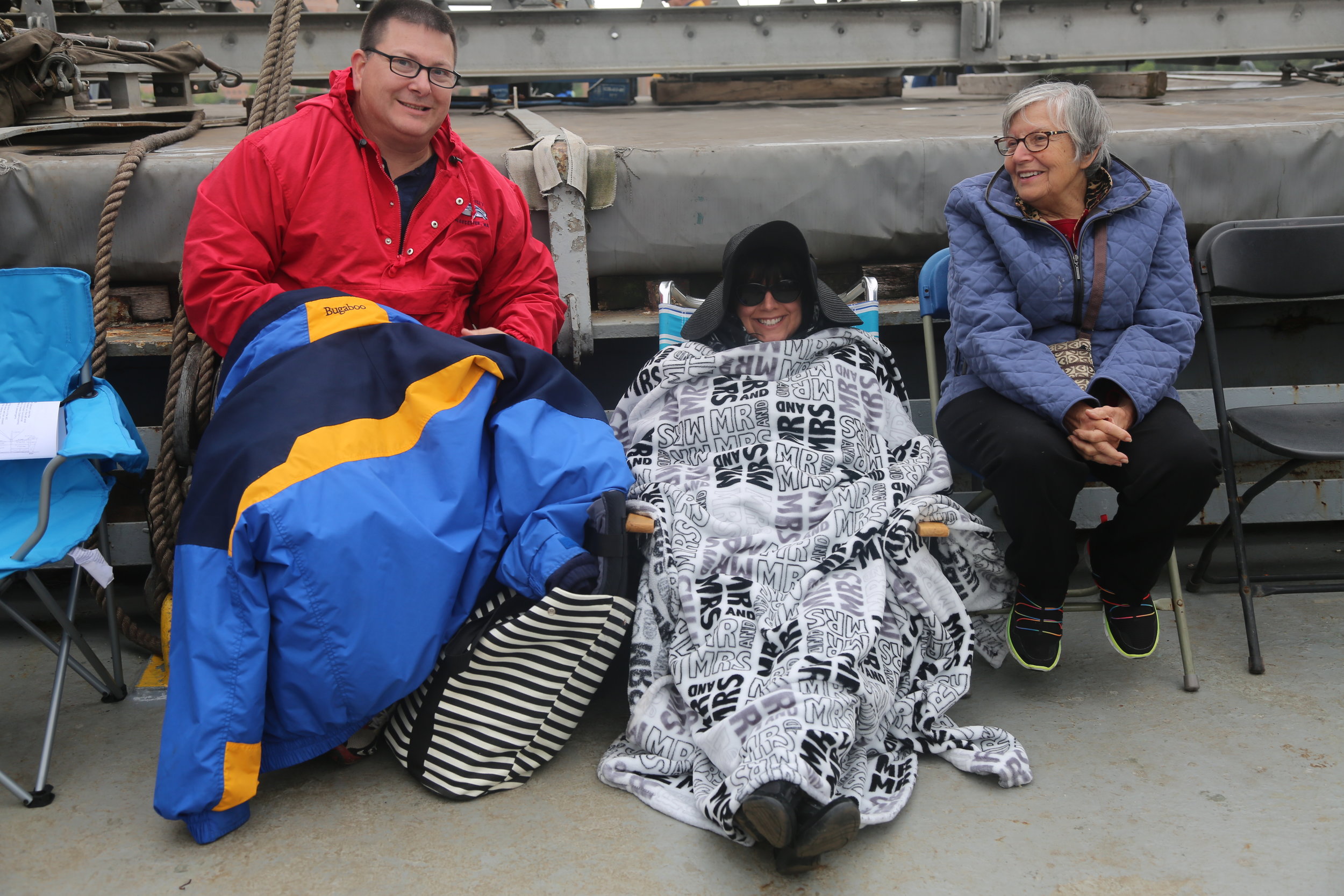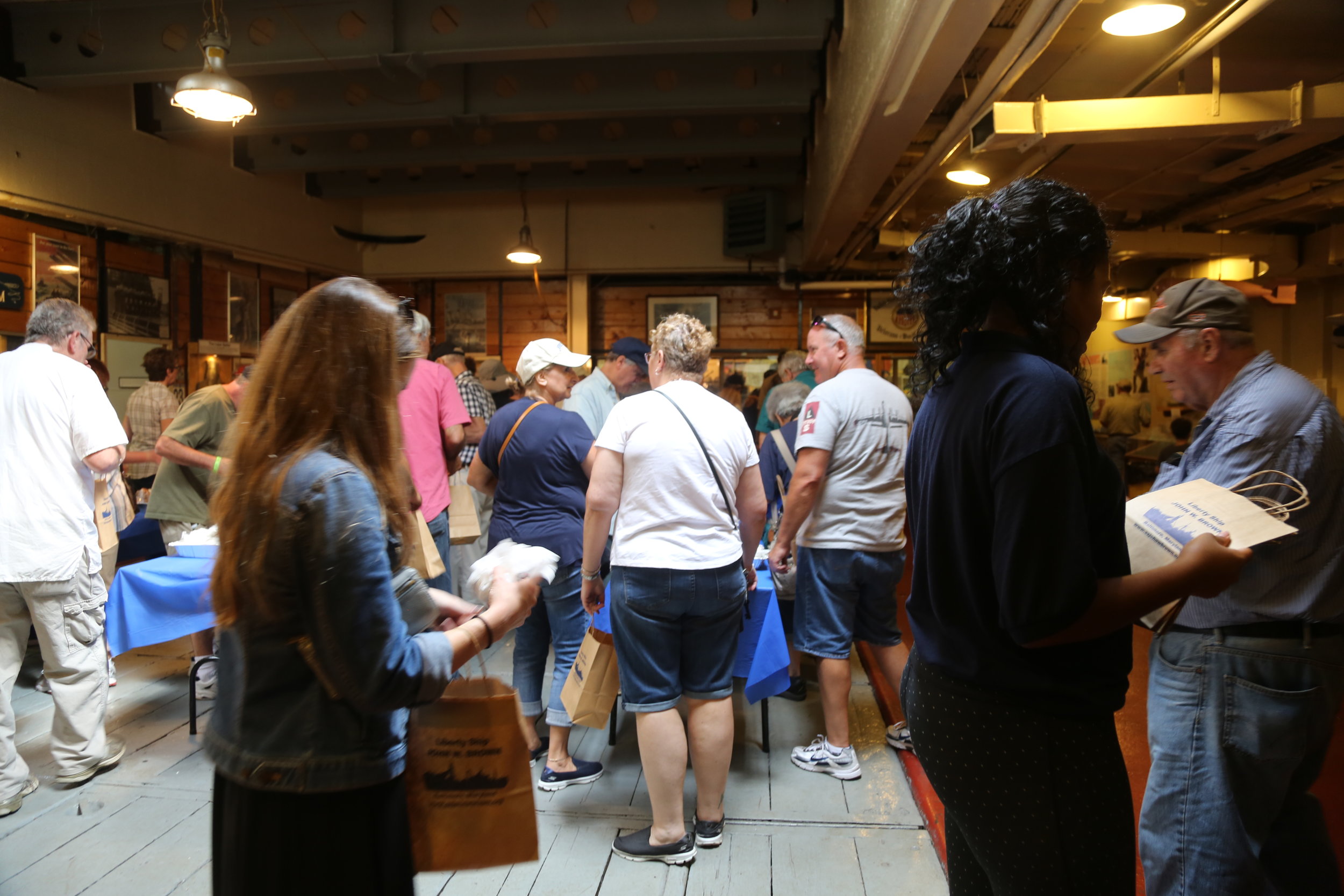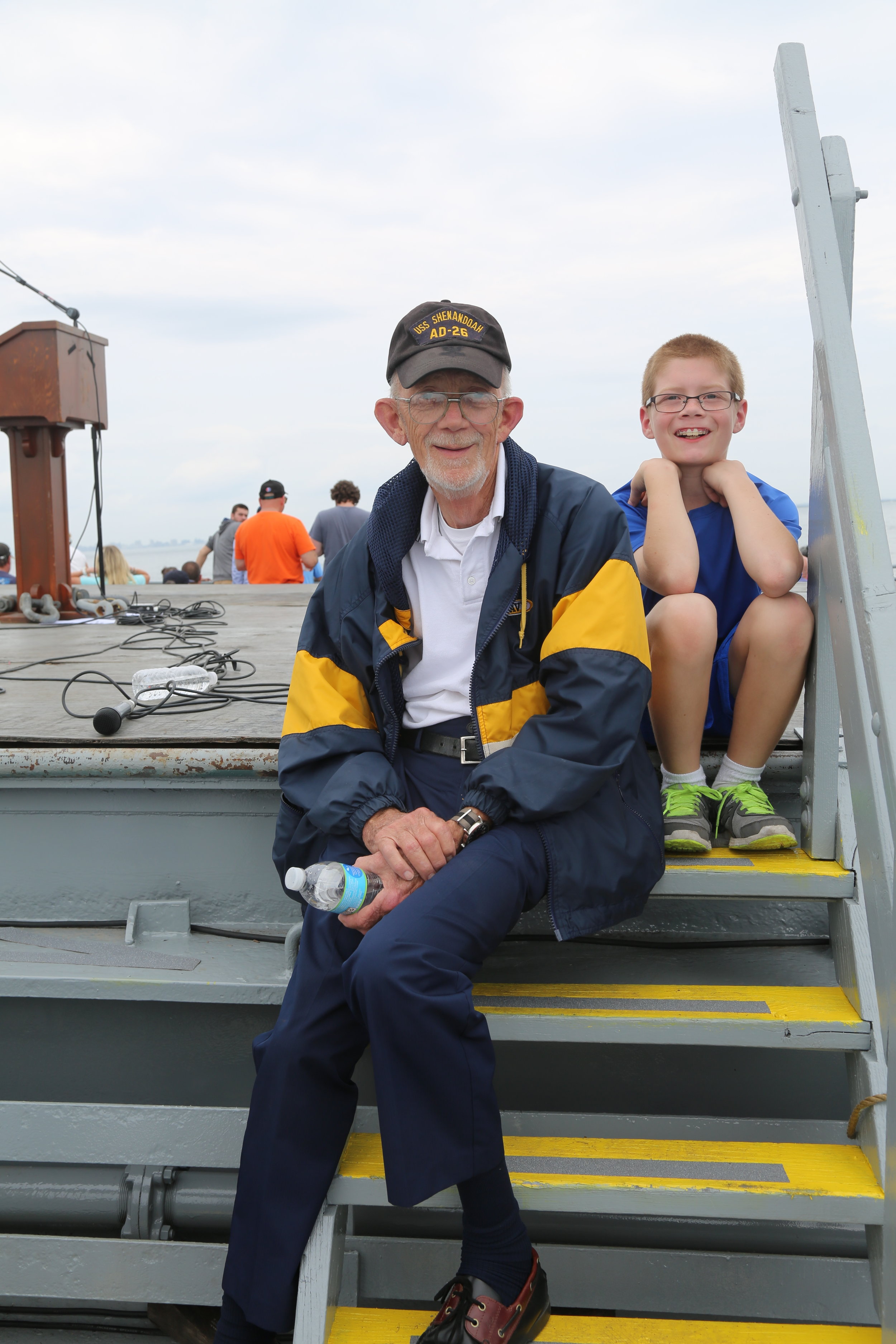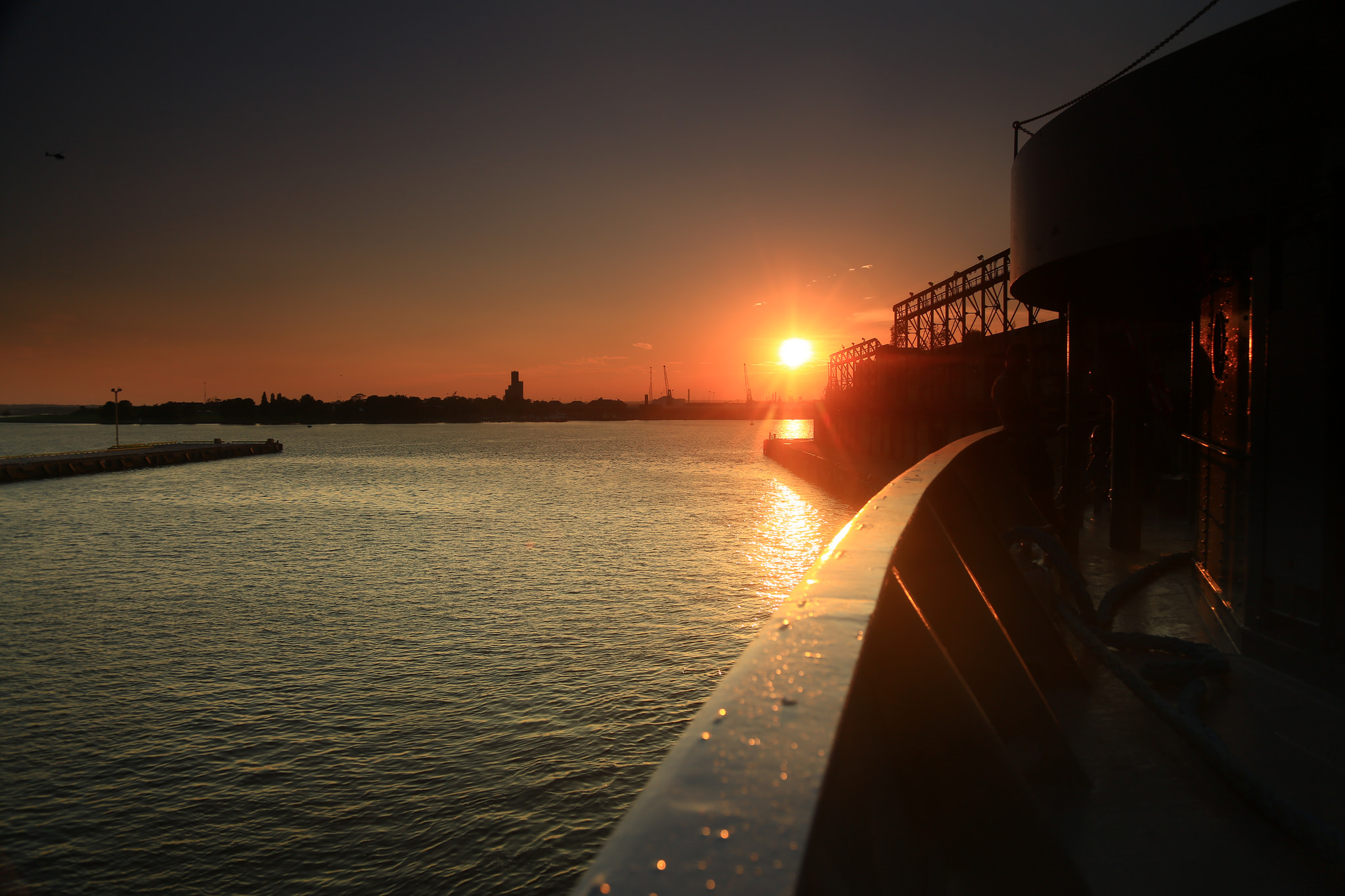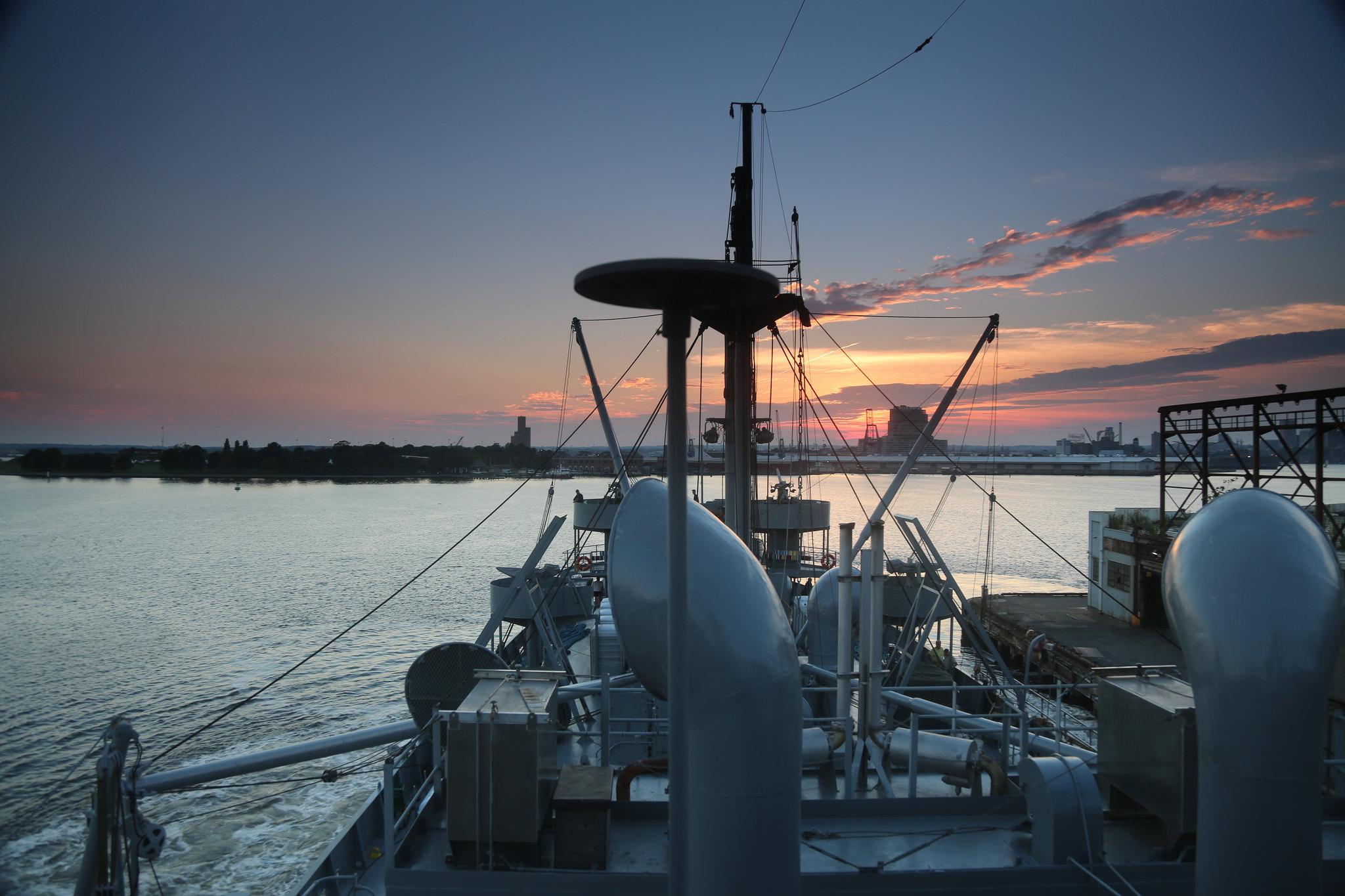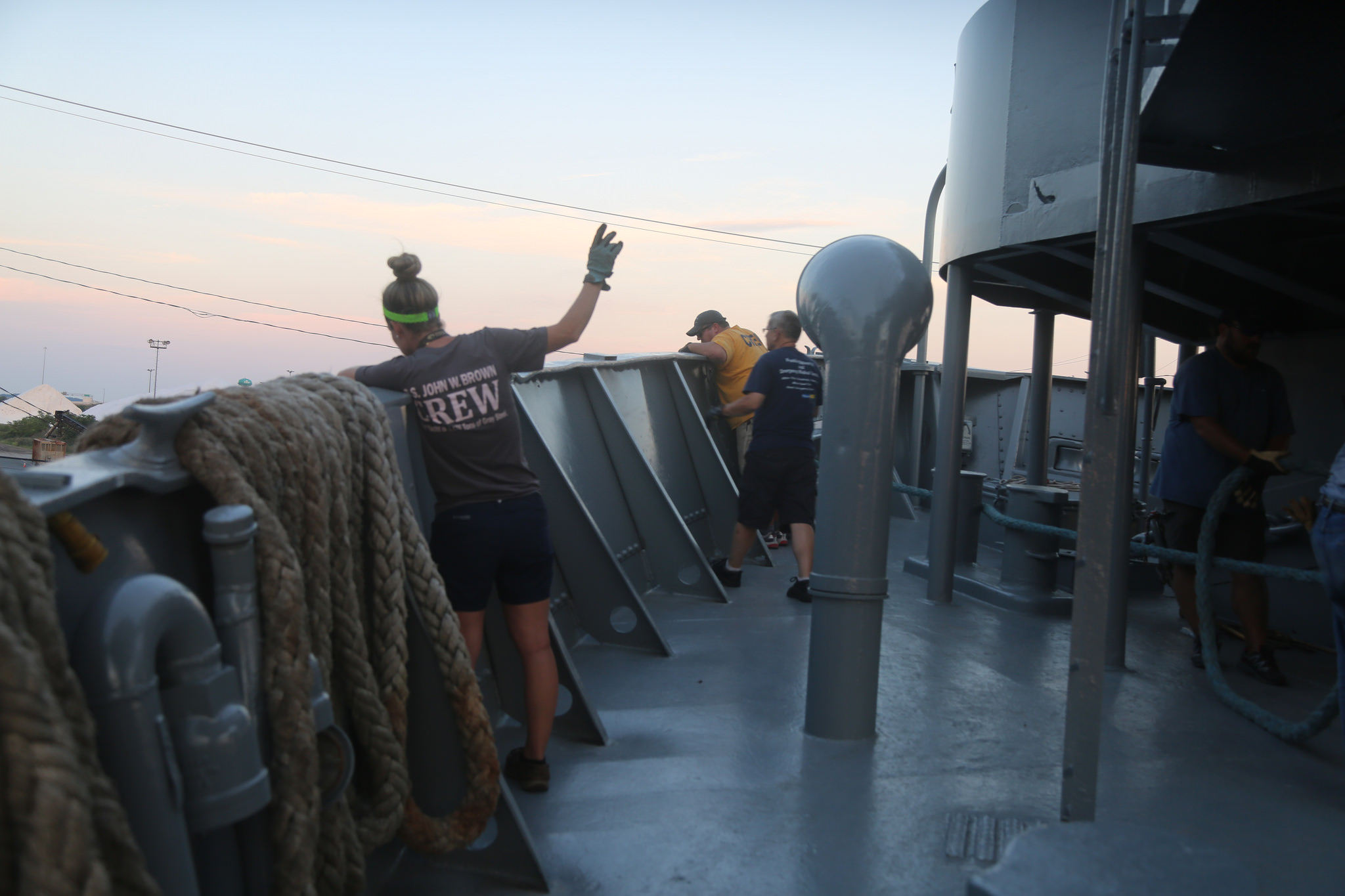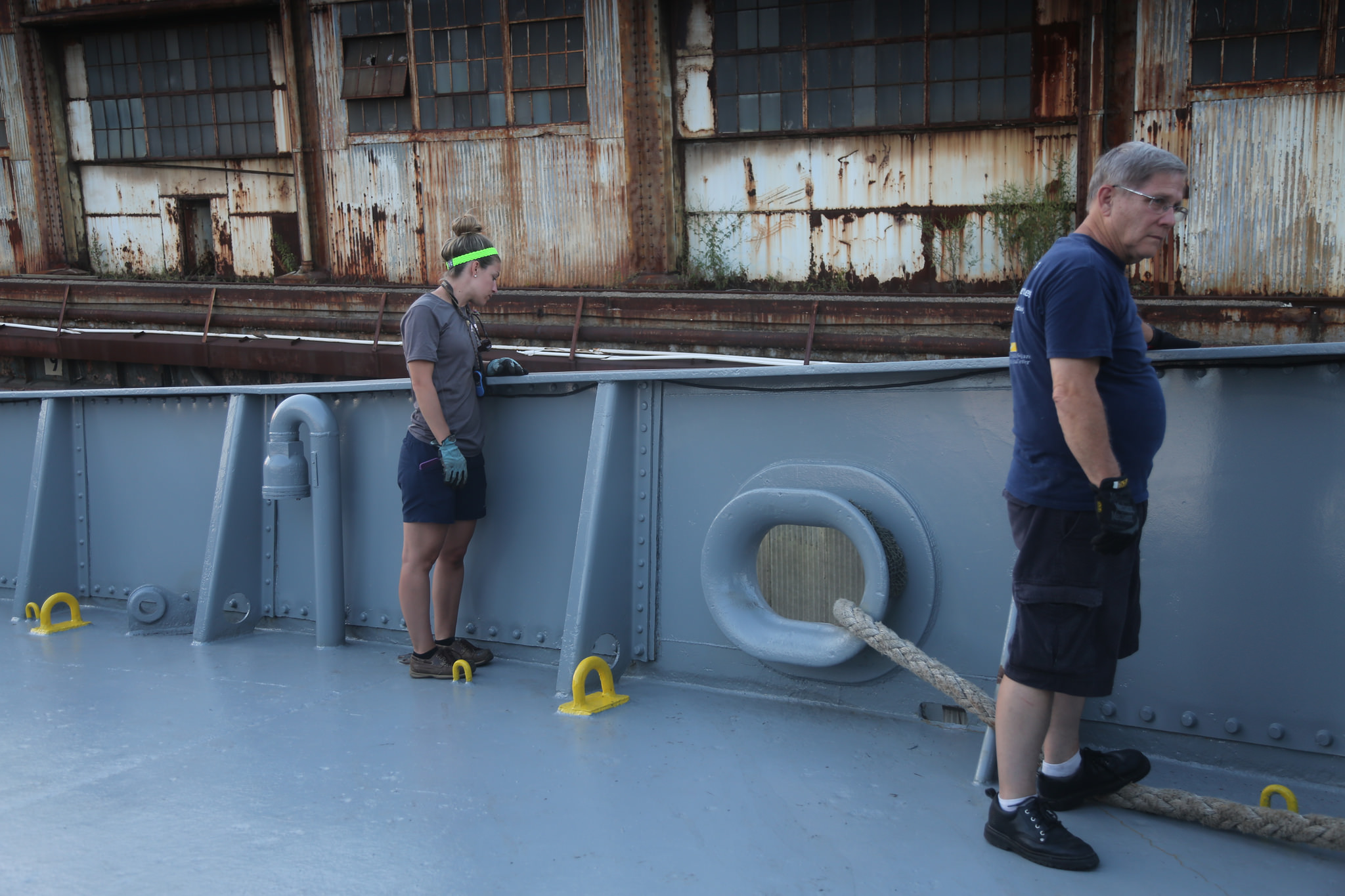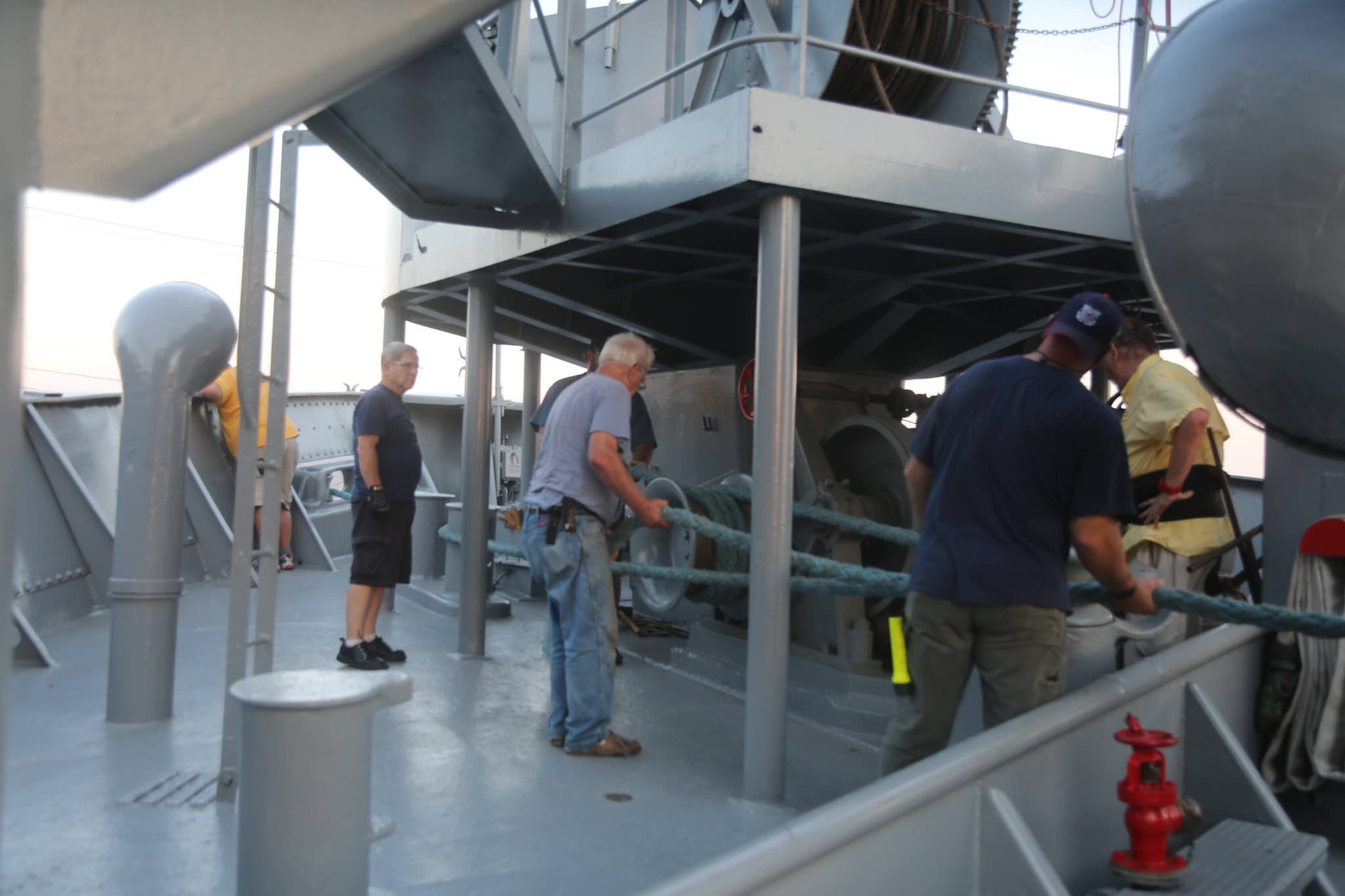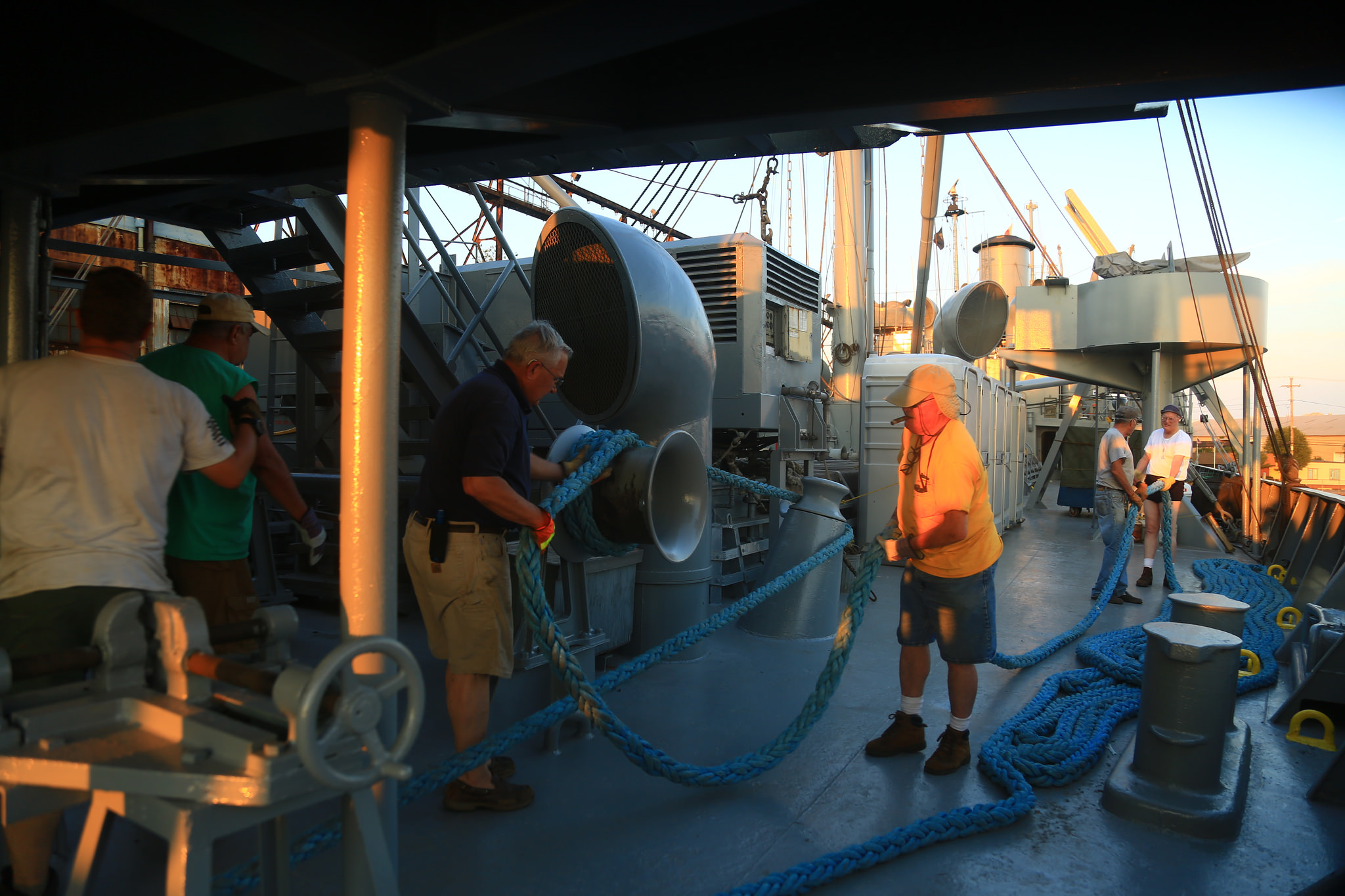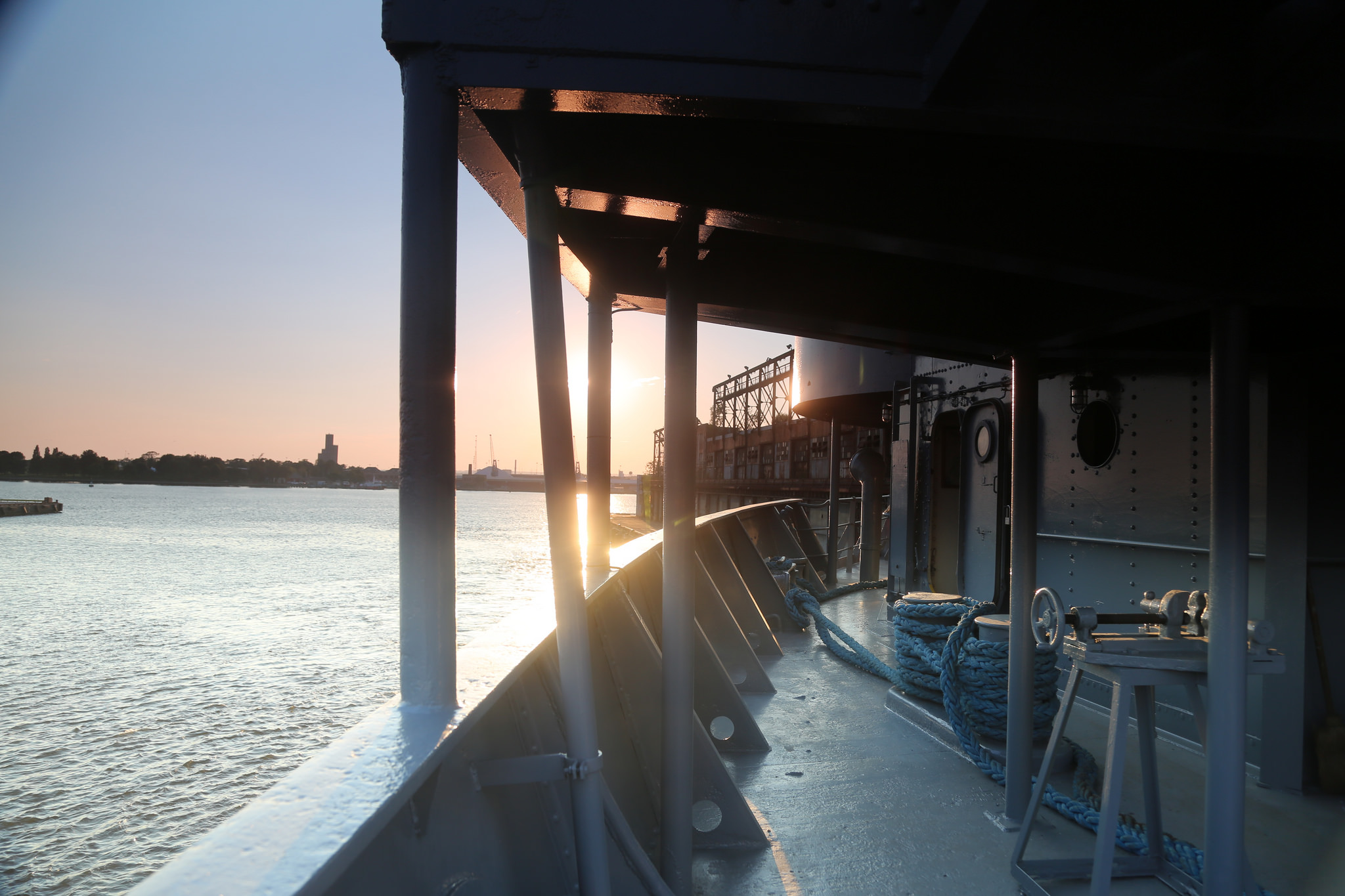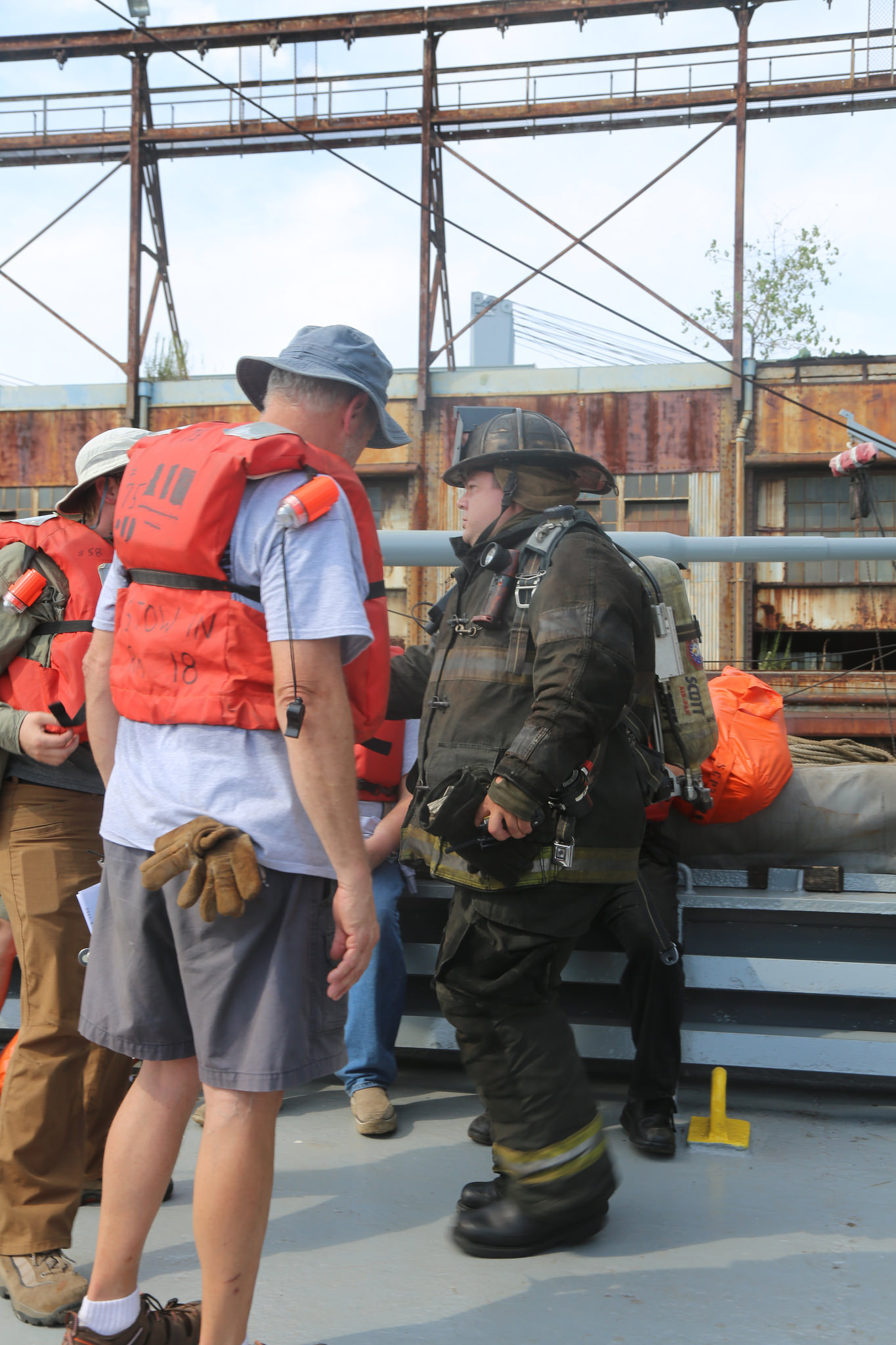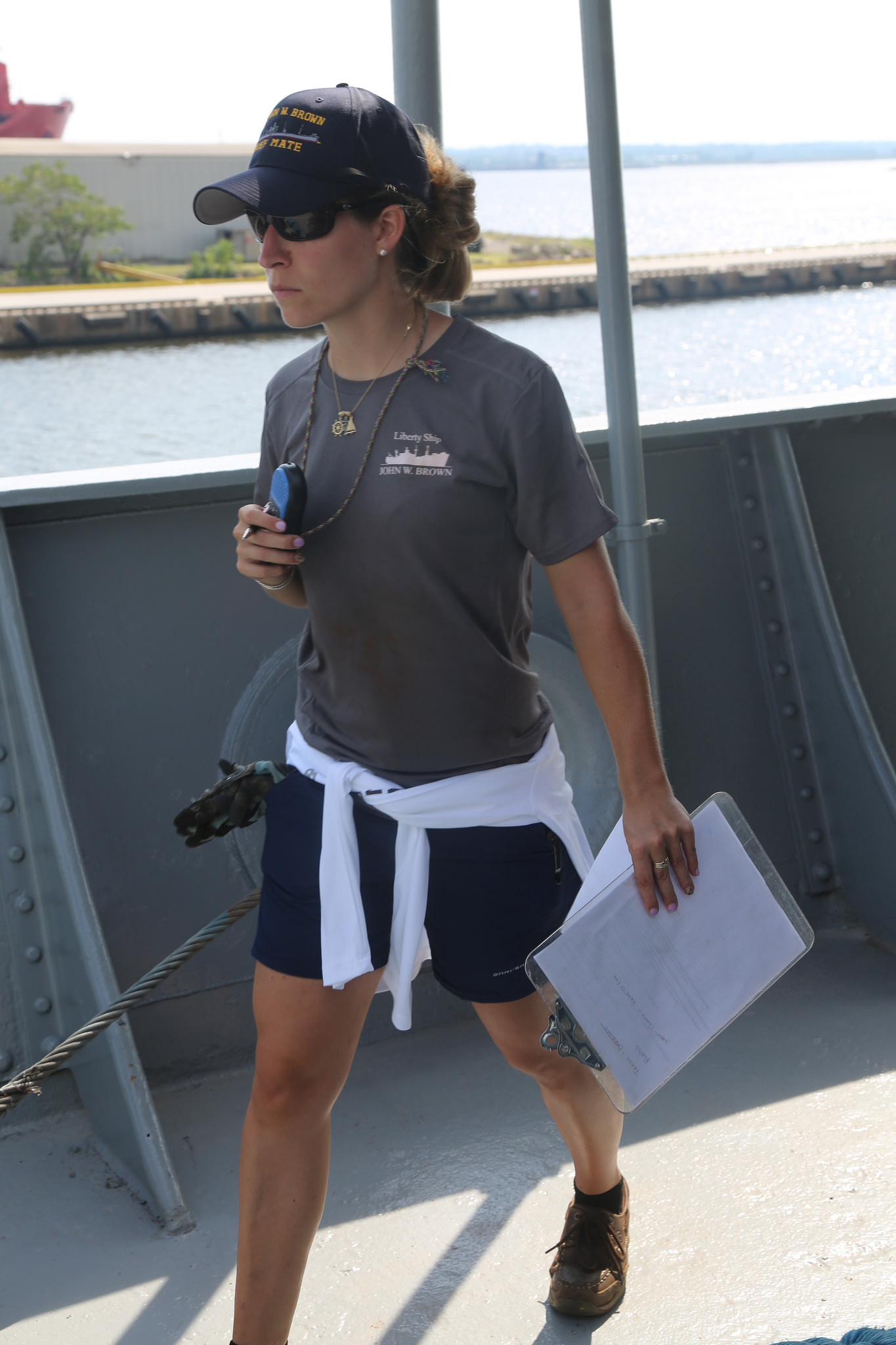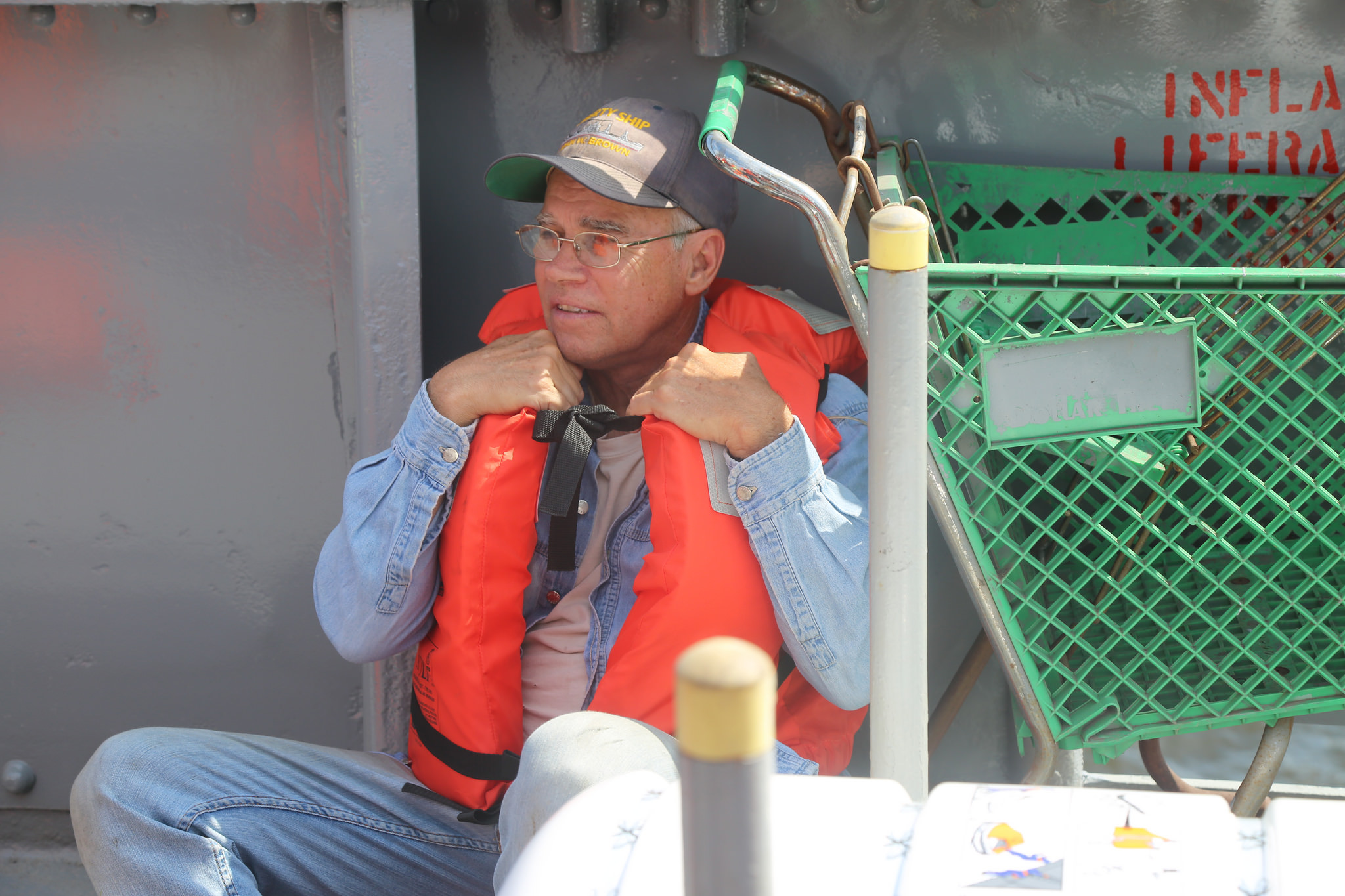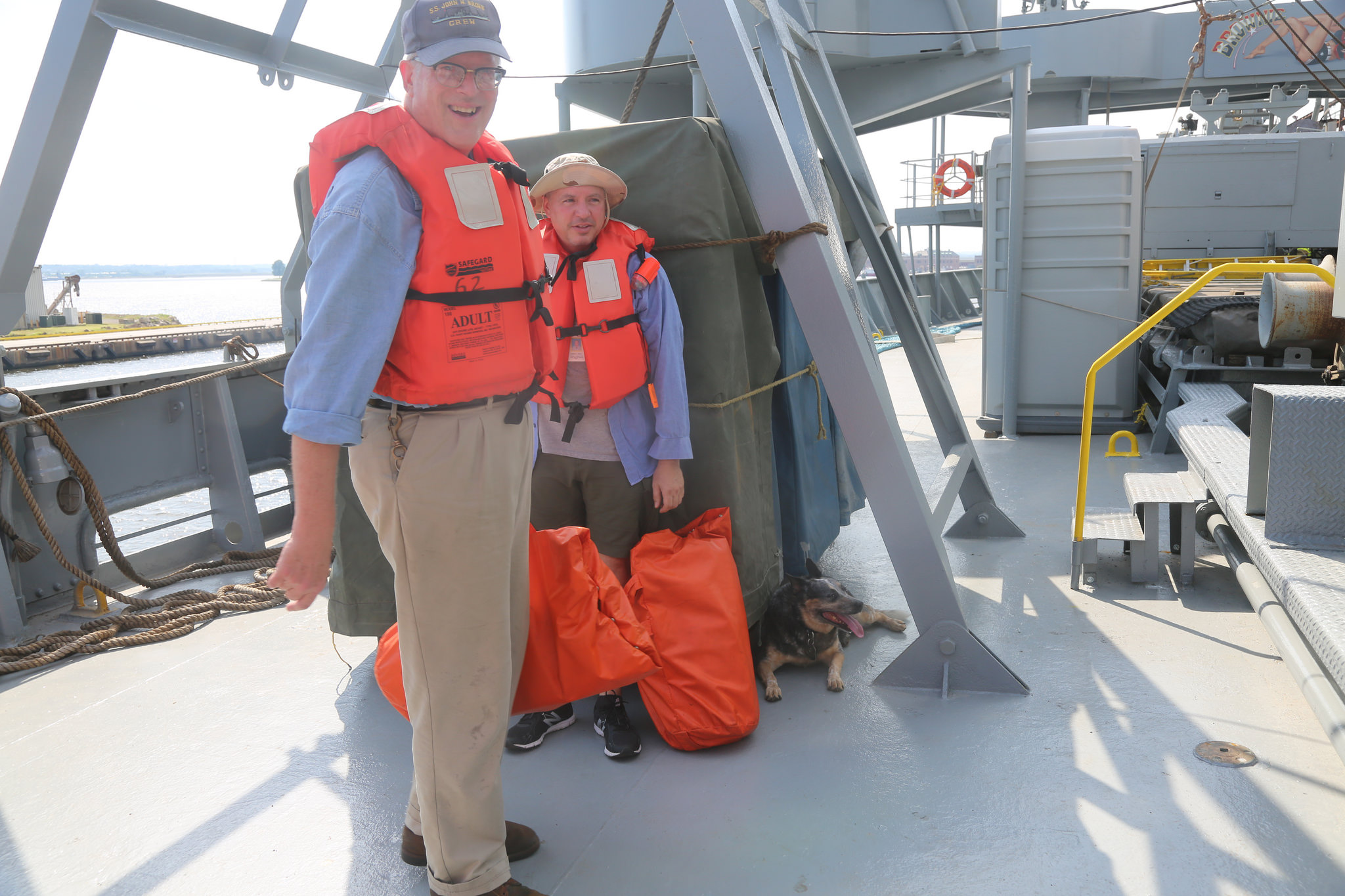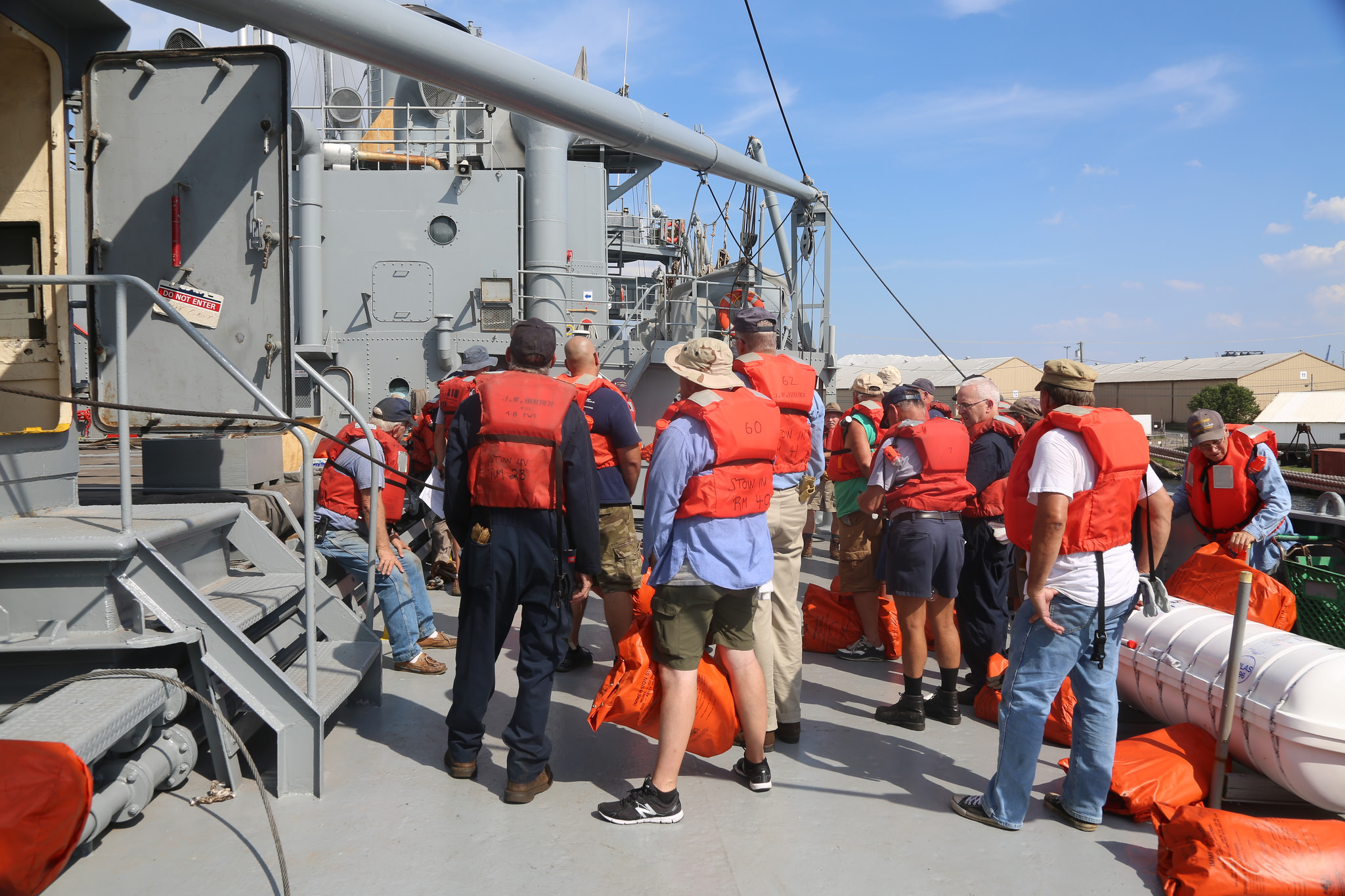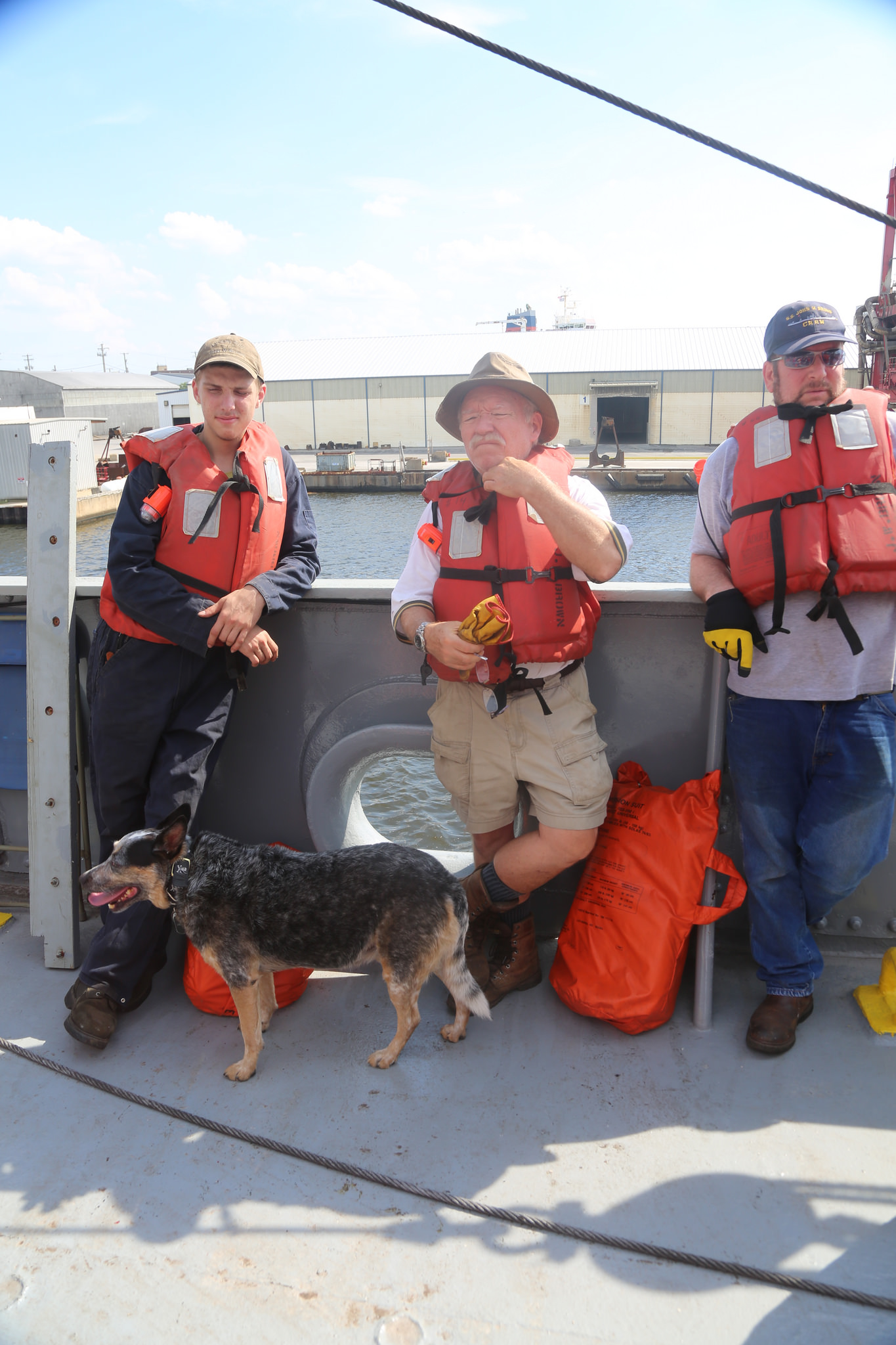Less than two weeks ago we found out that the few remaining months that we thought we had left on our lease, were whittled down to 1 1/2 months. A board meeting was held and a ‘press release’ was drafted, edited and released. This is the story….
FOR IMMEDIATE RELEASE
The Liberty Ship S.S. JOHN W. BROWN, the only surviving troopship from World War II, faces an imminent deadline due to the expiration of its pier lease and may have to leave its homeport in Baltimore, Maryland.
The 440-foot gray ship, a familiar sight on the Canton waterfront and during its “living history” cruises on Chesapeake Bay, has conducted an unsuccessful search over the past several years for an alternate berth. Project Liberty Ship Inc., the organization comprised entirely of volunteers currently operating and maintaining the vessel, are now looking at the prospect of having to leave the ship’s present home at Pier C on Clinton Street by the end of the year.
For several years the ship was housed at a Clinton Street pier owned by the state of Maryland, but that pier was sold and the lease arrangement that enabled the Brown to stay at that pier expired. The new pier owners generously offered S.S. JOHN W. BROWN an alternate berth at Pier C on a temporary basis and have been cooperative and flexible with Project Liberty Ship’s uncertain and ever-developing future. However, the current lease agreement, despite several extensions, is expiring at the end of 2019.
Michael Barnes, a member of Project Liberty Ship who coordinated the pier search effort, reports that fewer than a dozen available commercial piers in Baltimore are large enough to accommodate the historic vessel. Many of these piers are already being leased to the federal government and most require security restrictions that hinder the educational and tourist activities the Brown frequently hosts onboard. The Project has considered buying a pier but found that available sites are in disrepair and would require lengthy—and costly—construction work. Given the expiration date of the current lease agreement and being a 501 (c) 3 non-profit organization, time and funding is very limited.
As a last resort, the board is considering moving to another port, which would take the Brown away from Baltimore’s maritime heritage, the birthplace of the vessel and the home-base of a majority of the volunteers onboard. The 77-year-old ship, named after a maritime labor leader, was launched at Bethlehem Steel’s Fairfield Shipyard in Baltimore on Labor Day in 1942. It is listed in the National Register of Historic Places, which designates buildings, districts, sites, structures and objects worthy of preservation in America.
Since being restored by volunteers in 1991, the museum ship has sailed more than 25,000 miles and visited 29 ports in the United States and Canada. In recent years, the ship has expanded its community outreach from hosting cruises featuring 1940s-era entertainment and fly-bys from vintage aircraft, to acting as a classroom and fully operational training facility for the Maryland Port Authority, U.S. Navy Sea Cadets, high school-age STEM students, local police, fire, emergency responders, the Baltimore-based Maritime Institute of Technology and Graduate Studies (MITAGS-PMI), the Marine Engineers’ Beneficial Association (MEBA) and others. S.S. JOHN W. BROWN has long been recognized as a positive piece of Baltimore’s strong maritime history and has attracted tourists to the area from as far away as England and New Zealand.
The primary mission of Project Liberty Ship is to educate people of all ages about the vital role of the wartime American Merchant Marine, Naval Armed Guard and shipbuilders, three largely unheralded groups that were instrumental in the Allied victory in World War II, as well as to world-wide sealift operations during all past and current conflicts by presenting living history aboard an authentically restored Liberty Ship. The aim of the organization is to honor the legacy of all American veterans.
The Brown completed 13 voyages carrying troops and cargo during and after World War II. She then served as a maritime trades high school in New York City for 36 years. S.S. JOHN W. BROWN returned to Baltimore in 1988, where she was restored to her 1944 state by Project Liberty Ship volunteers. Out of a total of 2,710 Liberty Ships built during World War II, S.S. JOHN W. BROWN and one other, the San Francisco-based S.S. JEREMIAH O’BRIEN, are left sailing today.
Ok, relax… take a breathe and settle down for a minute and watch a slide show…. This is what is important. Let’s keep that in mind. This living museum, here in Baltimore…that is what is important.
Ok, so have the volunteers of Project Liberty Ship, who donate thousands of hours on the BROWN ever just accepted the inevitable? Have they ever thought that things were hopeless? Have they ever thought that the ship was not important enough to do more work? The answer is no. We cinched in our pants, put on our work gloves, took a deep breath and started to attack the problem head on. Board members came up with a series of things that needed to be done and people to contact.
A constant contact email was sent out, info was posted on social media, and the press release was sent to government officials, news stations, and The Sun.
Then the media came…. first there was WMAR (click to see their story). Then came WBFF Fox Baltimore and WBAL TV 11. Then the Baltimore Sun created their article… all very nicely done, we might add! Then WJZ 13 CBS Baltimore came out with their version (pssst… Captain Basciano thinks she did her best in this particular interview. ‘Practice makes perfect!’) But they are all awesome and created a frantic 3 days of people needing to be at the ship to greet journalists.
Somewhere on one of the social media posts, a reader said ‘try a petition’. A volunteer created a petition on Change.org that generates emails to designated people (Mayor Jack Young, City Hall, and Governor Hogan). As of this writing (8pm 11/12/19) there are 1,361 signatures (in about 36 hours). If you have not seen the petition, please check it out https://chn.ge/2X7XLOh It may seem ‘pie in the sky’ but politicians will get involved when their constituents are inspired by something. The goal is to show them that Baltimore city, the state of Maryland and the people around the country and world who travel to see the SS JOHN W BROWN matter. Their love of this ship, their desire to keep it in the state of Maryland where it was built over 76 years ago, MATTERS. If each of us were to ask 10 people we know and love to go online and sign the petition, we will have so many supporters that politicians would hear our collective voice.
What we need right now is to get contacts. Many of the ideas from people (NY, Norfolk, Cambridge) are great but what we need are contacts of people that can make it happen. If you happen to know someone who has pull (politicians, businesses, and owners of land with deep water ports) please help us by advocating and sending us contact info.
Just one more point to understand. The chip-in part of the petition is not necessary. We think that is why we got so many signatures in just 2 days (because so many people donated to the petition, which boosts views) but if you want to donate to Project Liberty Ship/SS JOHN W BROWN, please do so through the donate button found on the front page of our website. This ensures that all money goes directly to the ship. While we love that so many people boosted (chipped in) our petition, we’d prefer that people share or ask others to sign it, as the signatures and attention is what we are after. We hope that clears things up!
Keep supporting us. We thank you all for everything. Help us keep our history alive.
